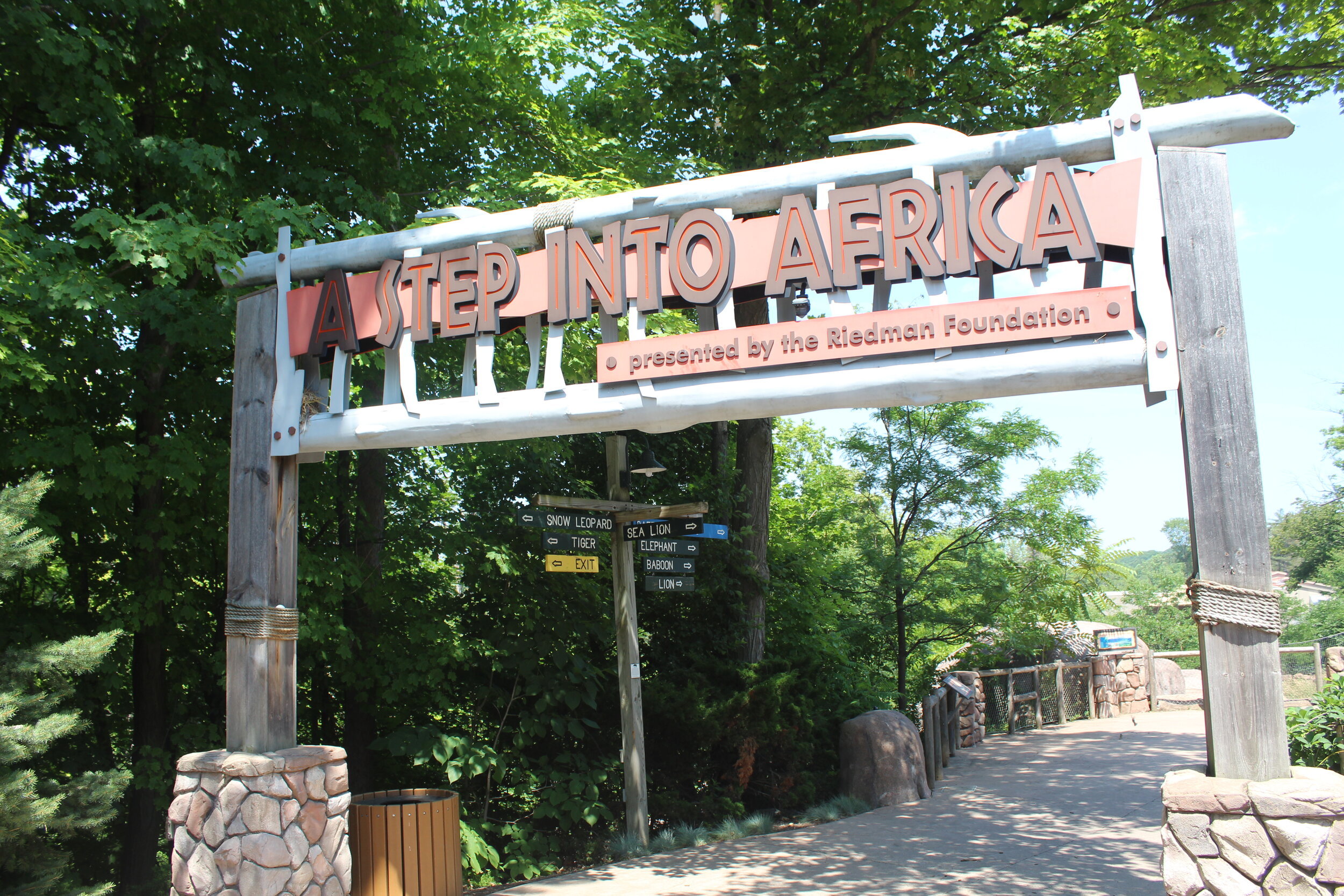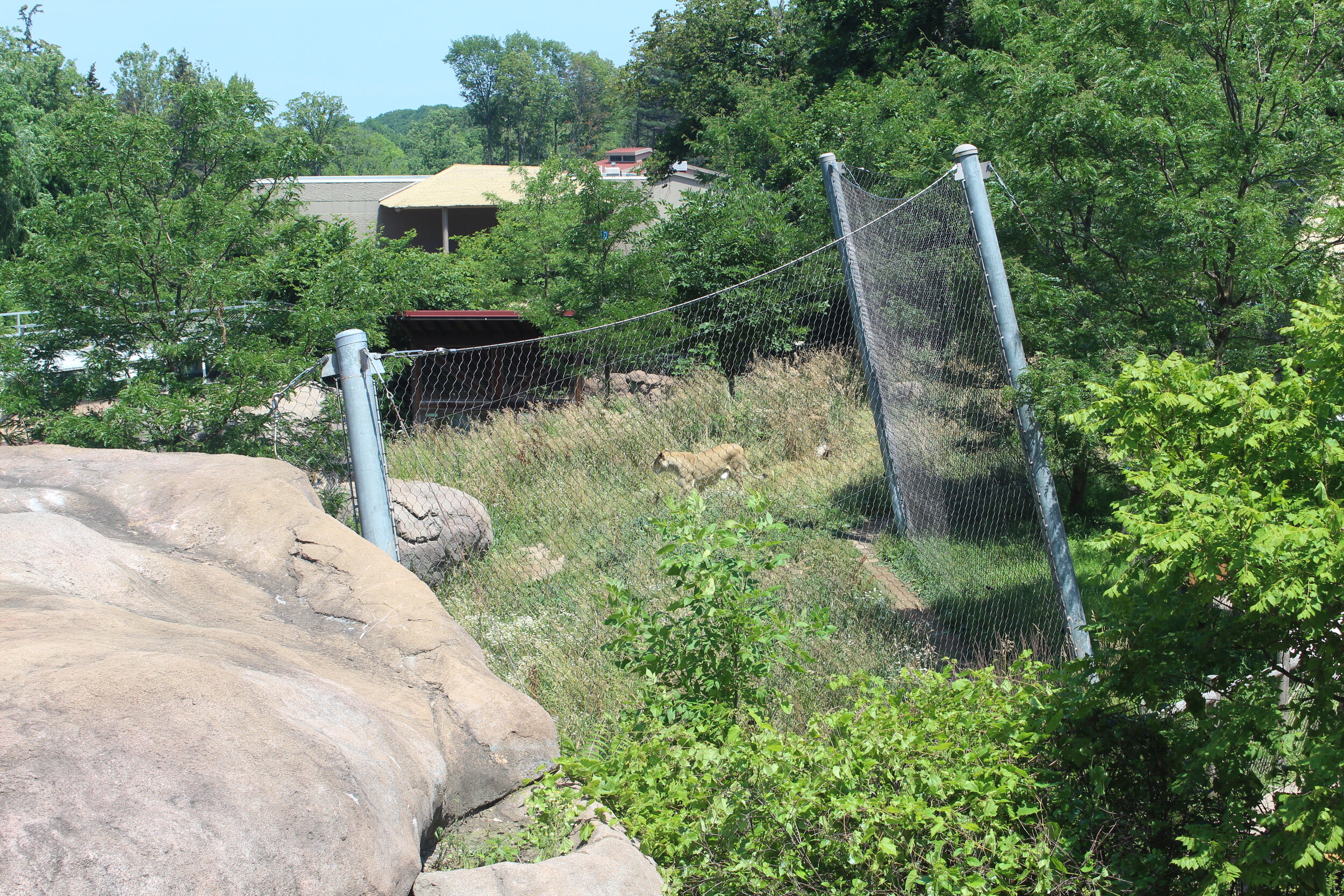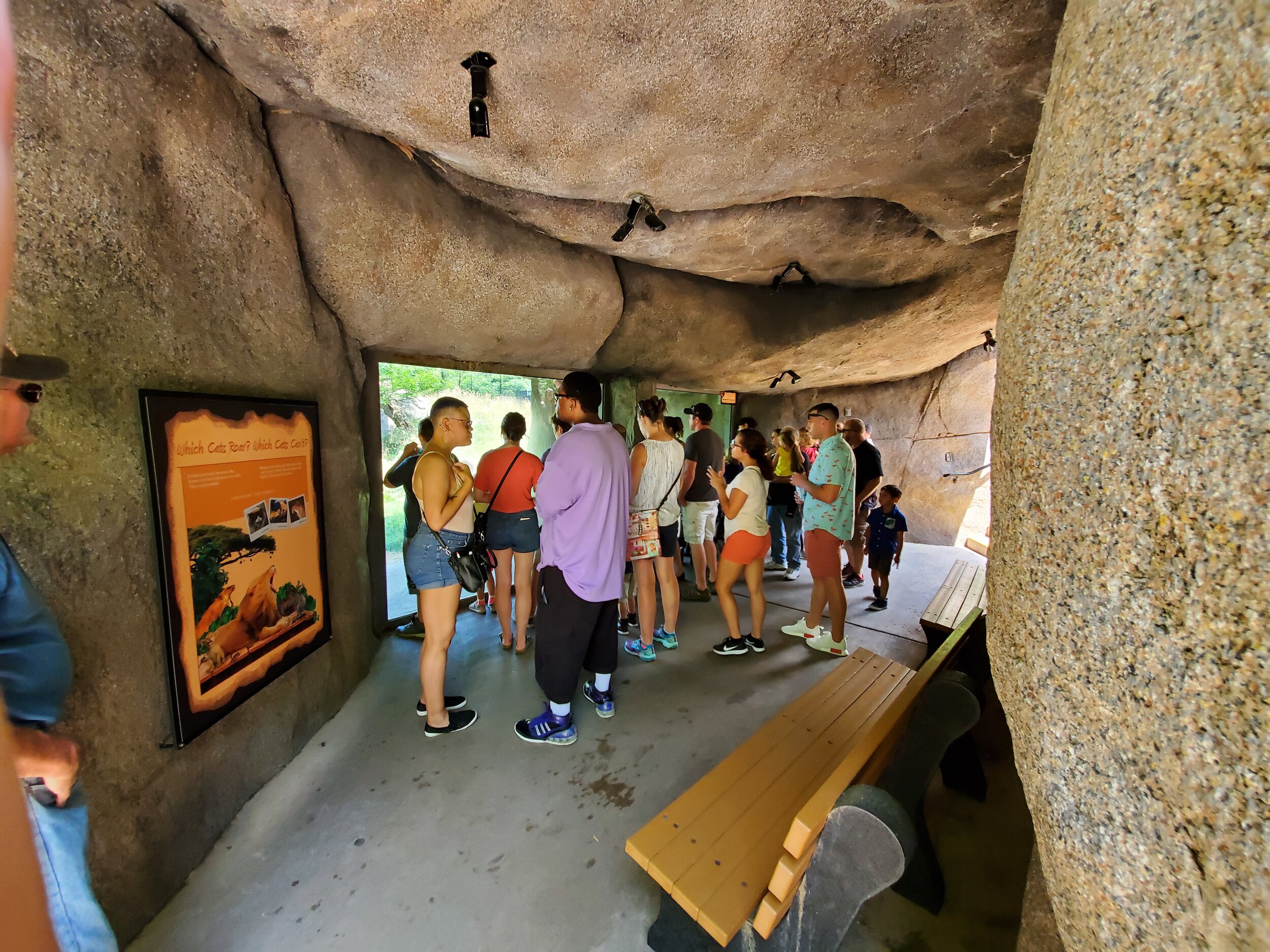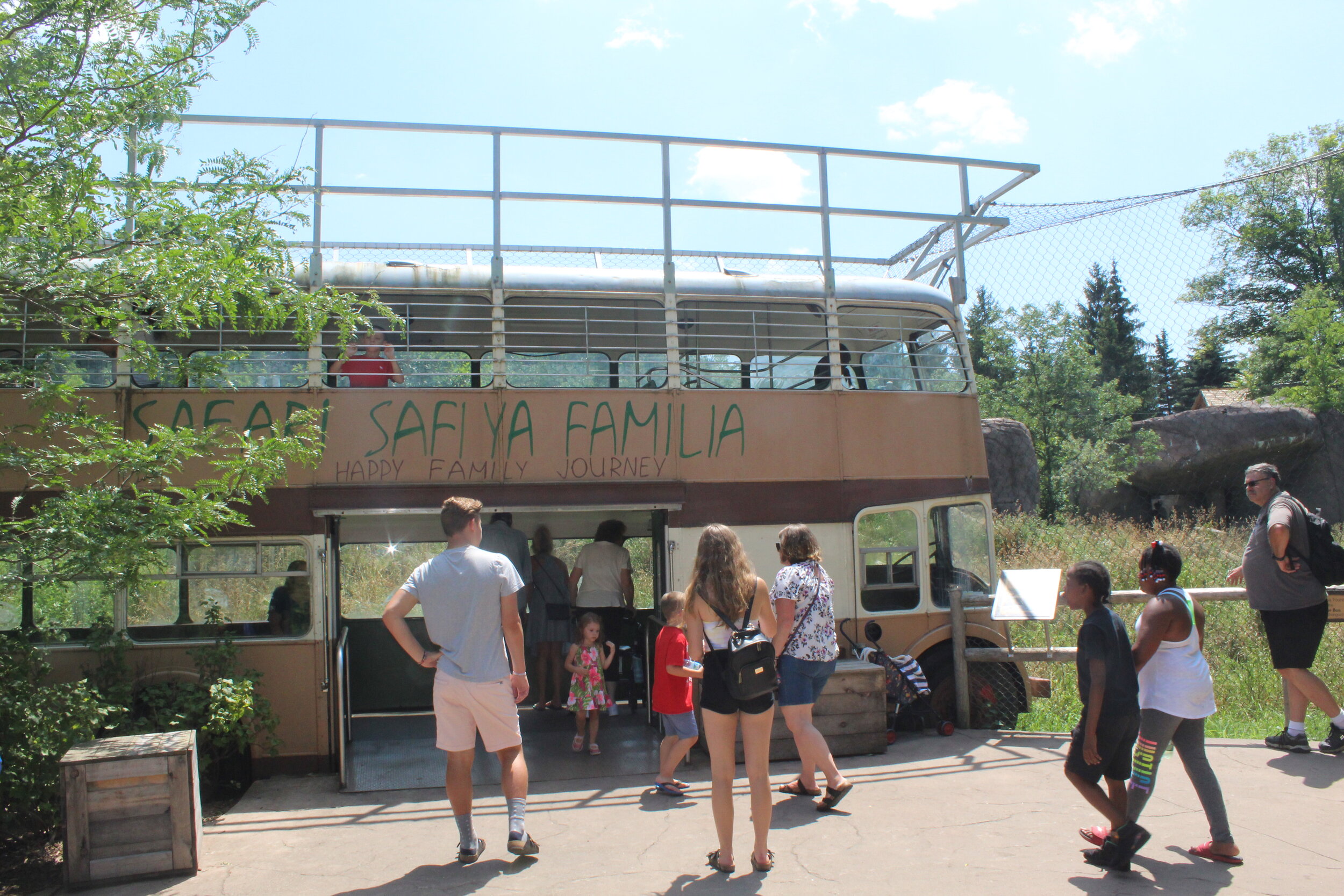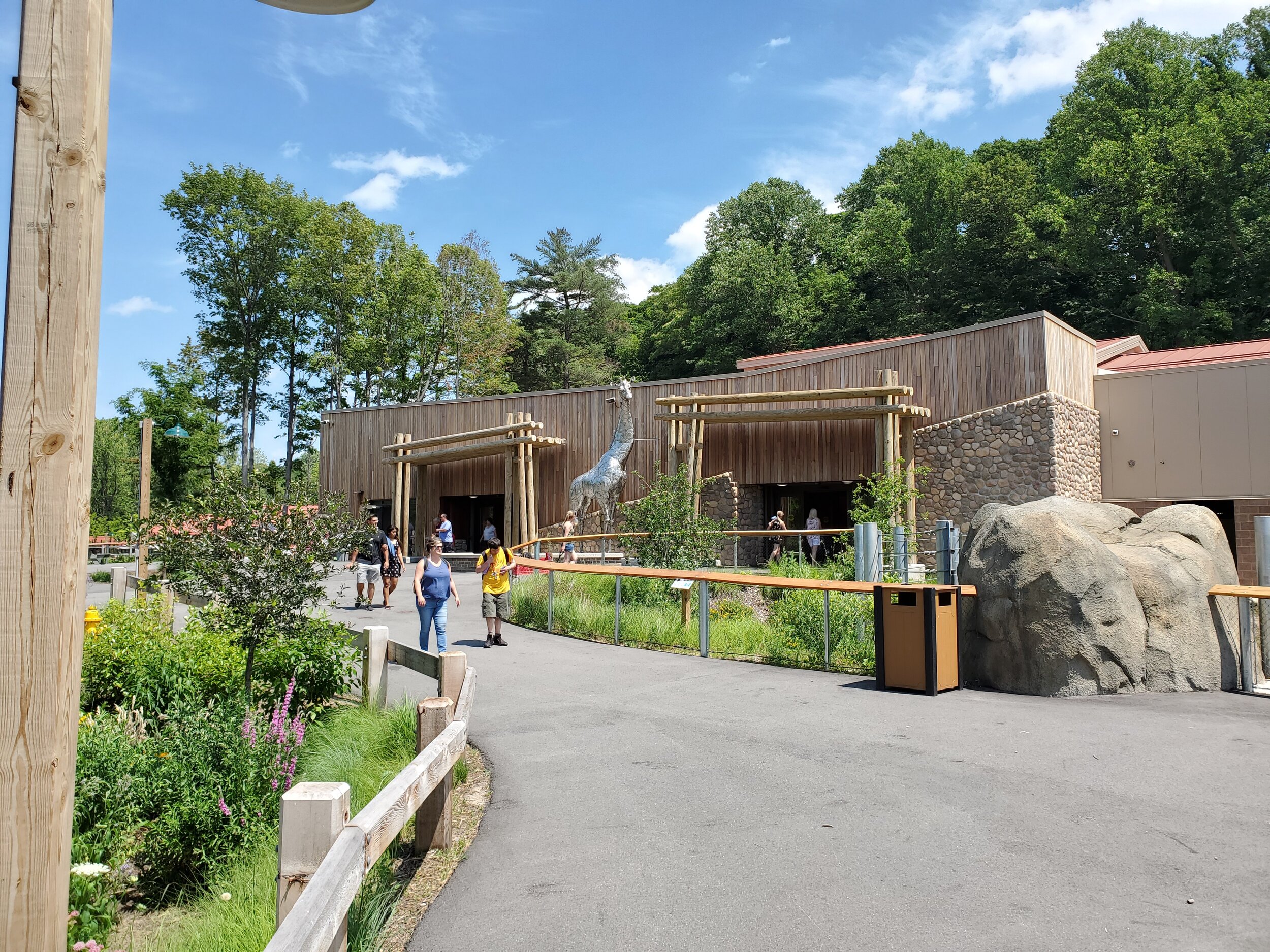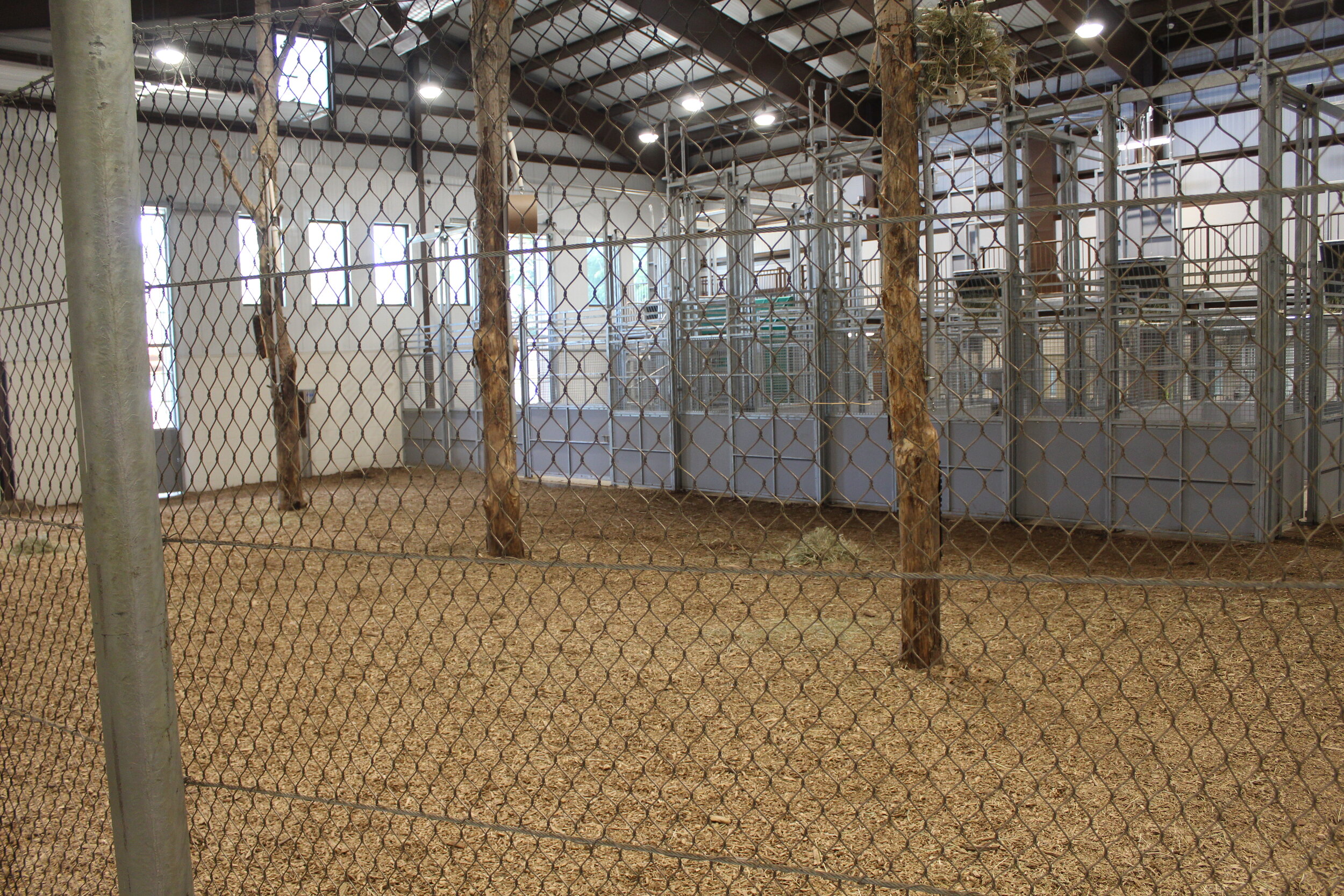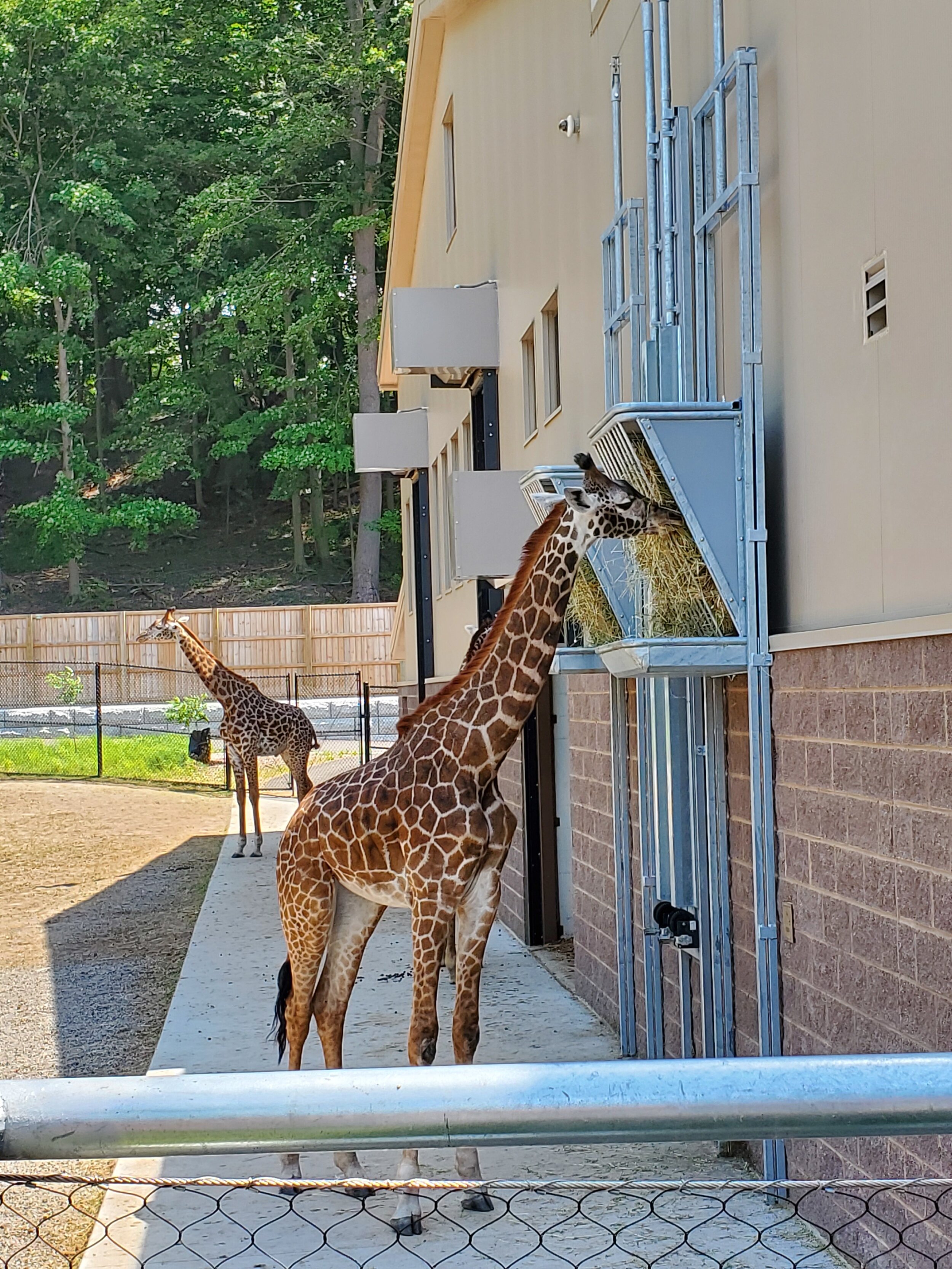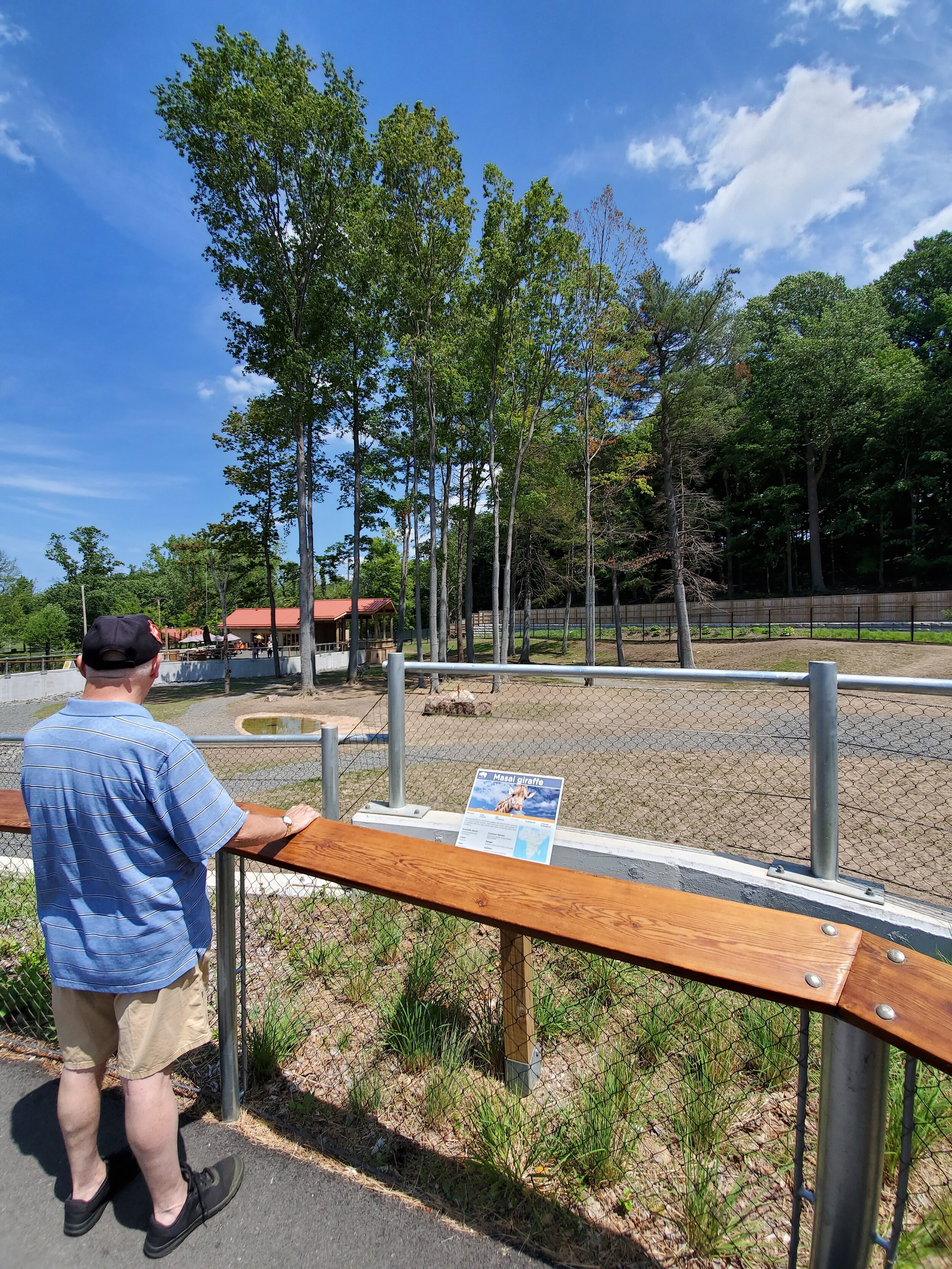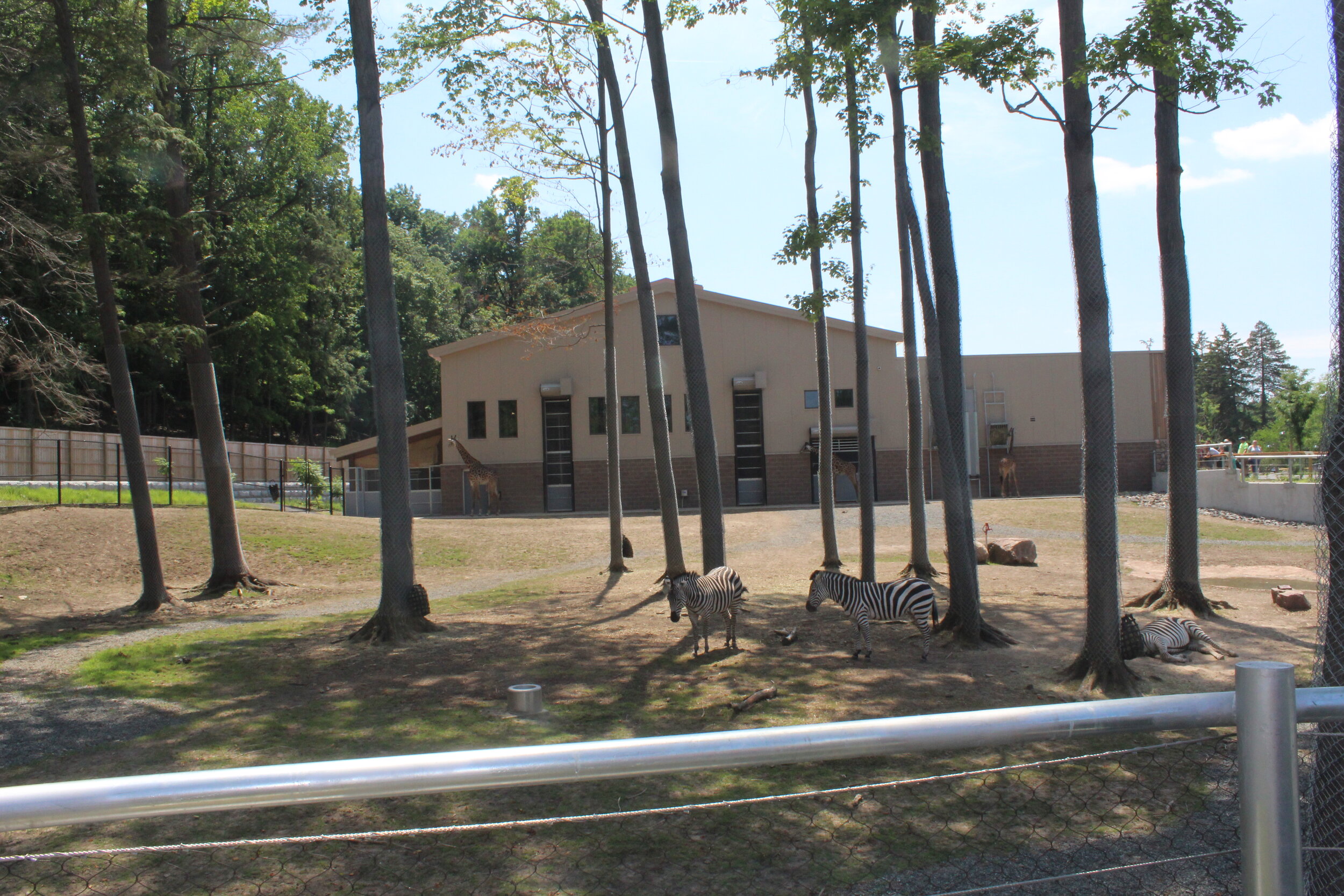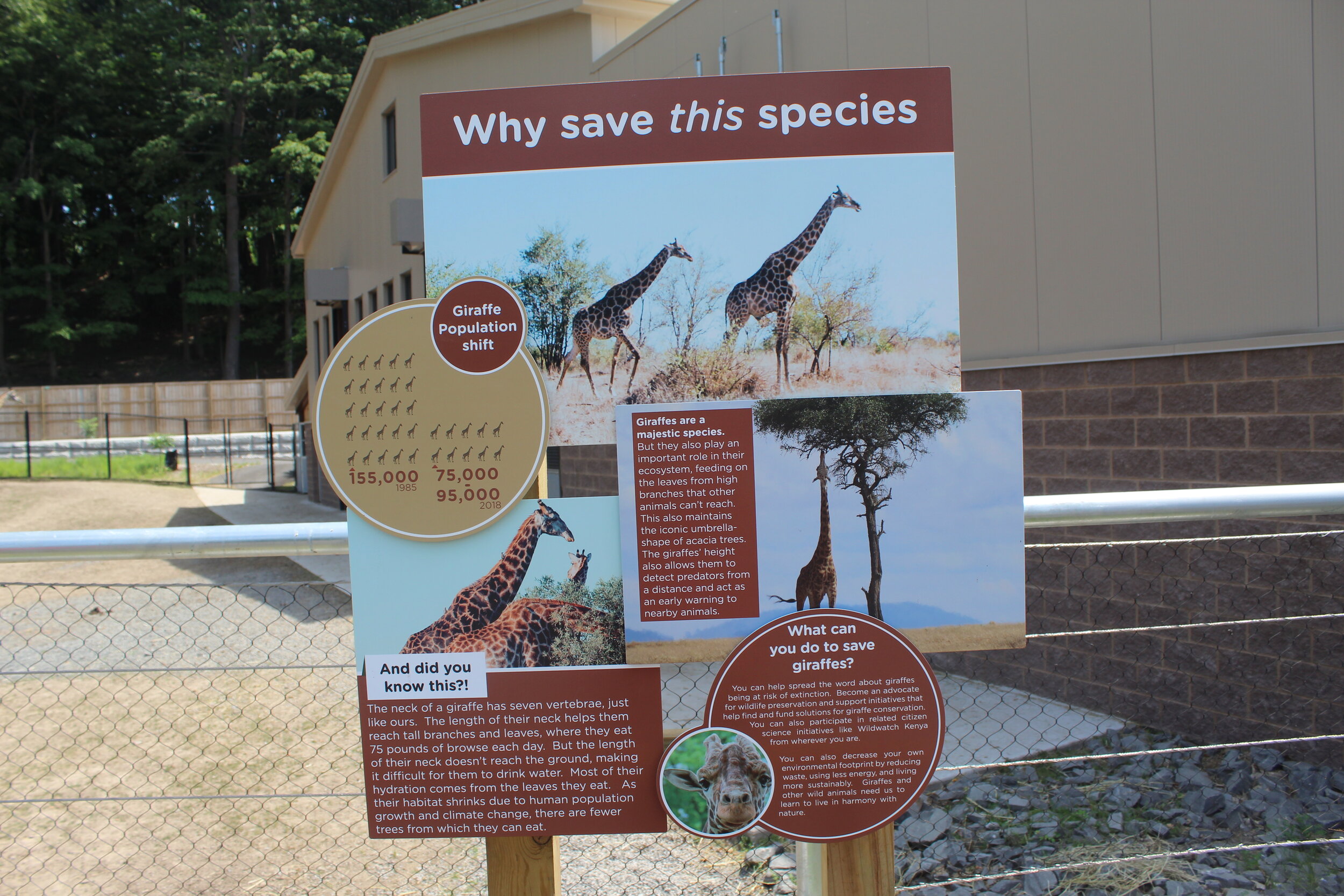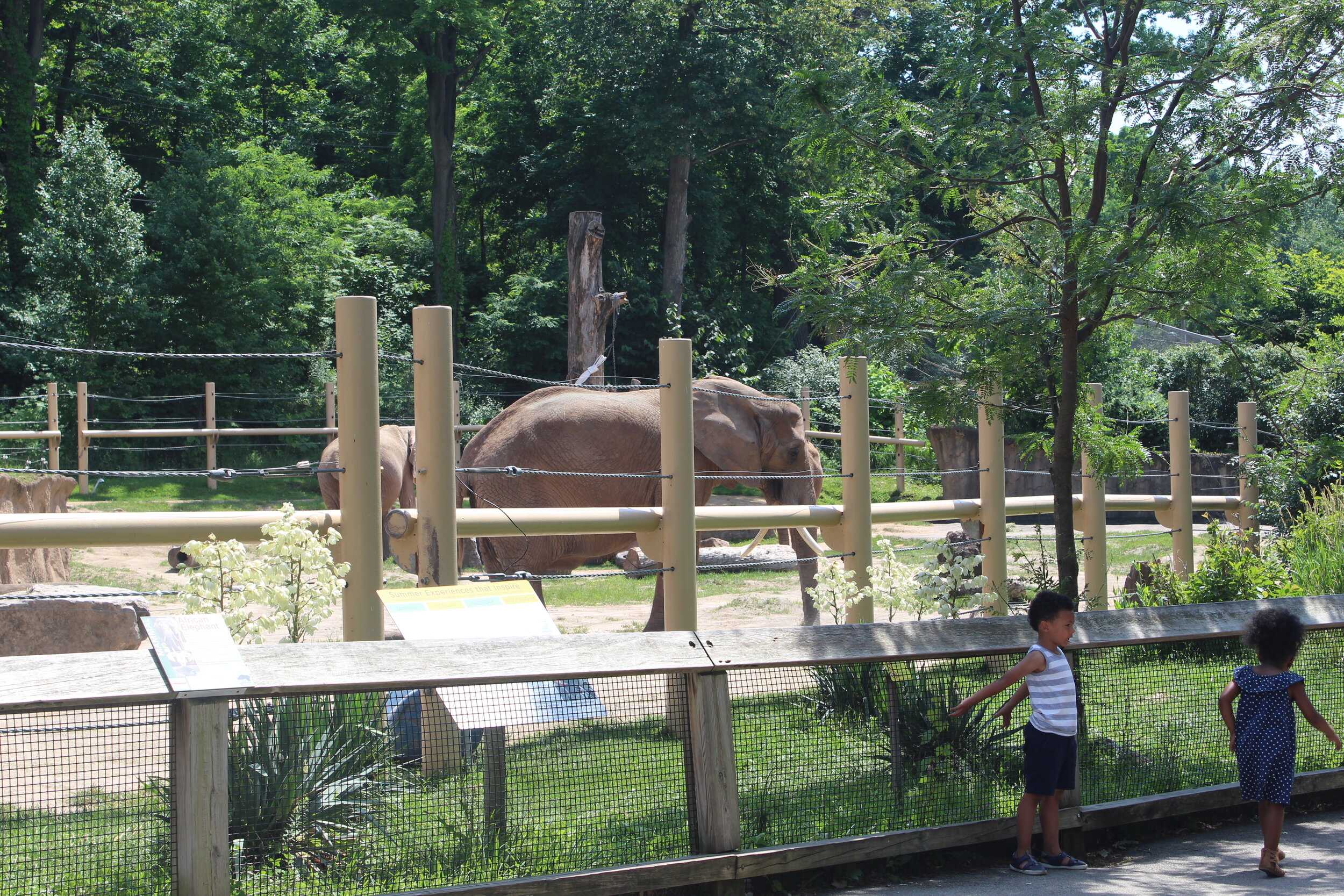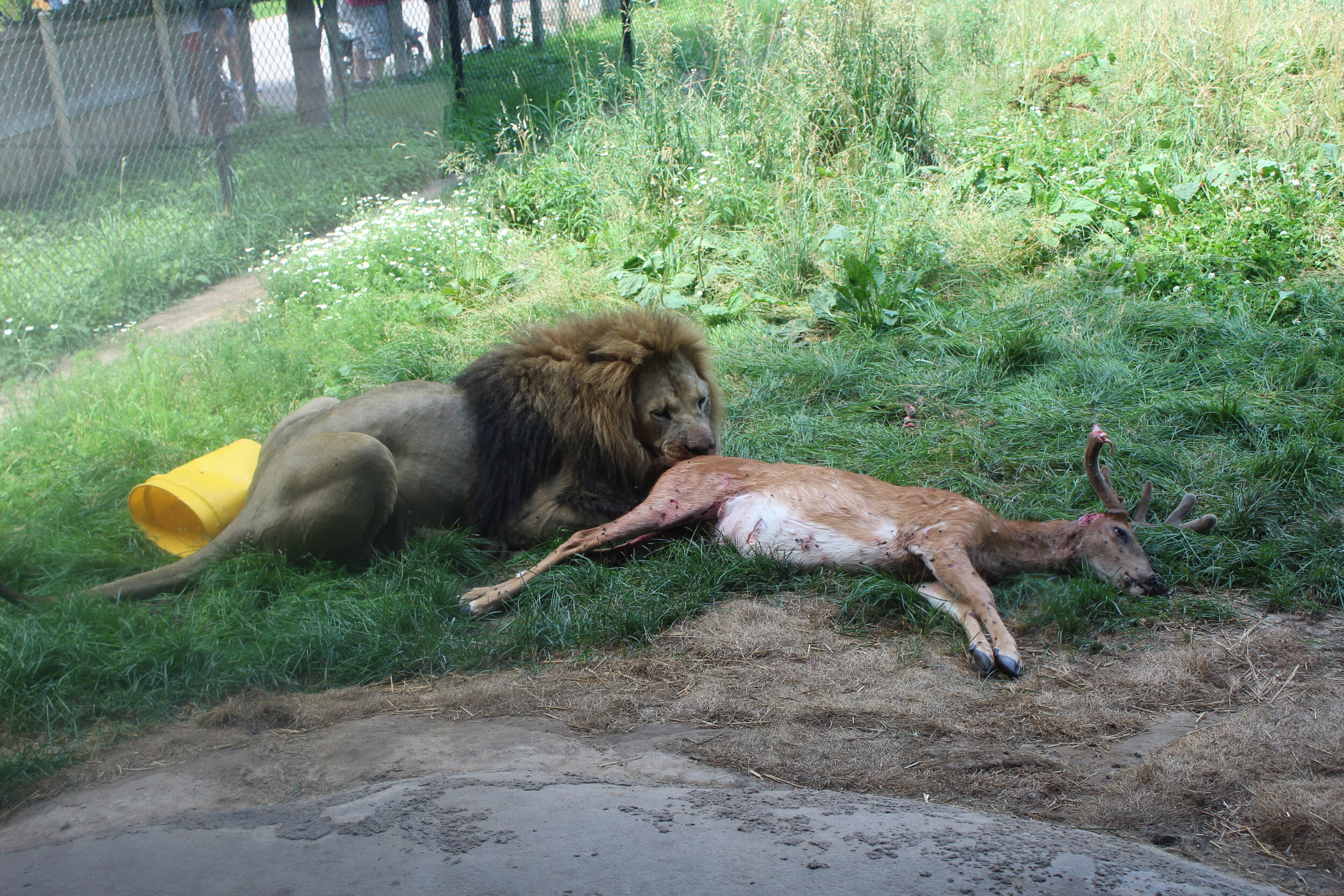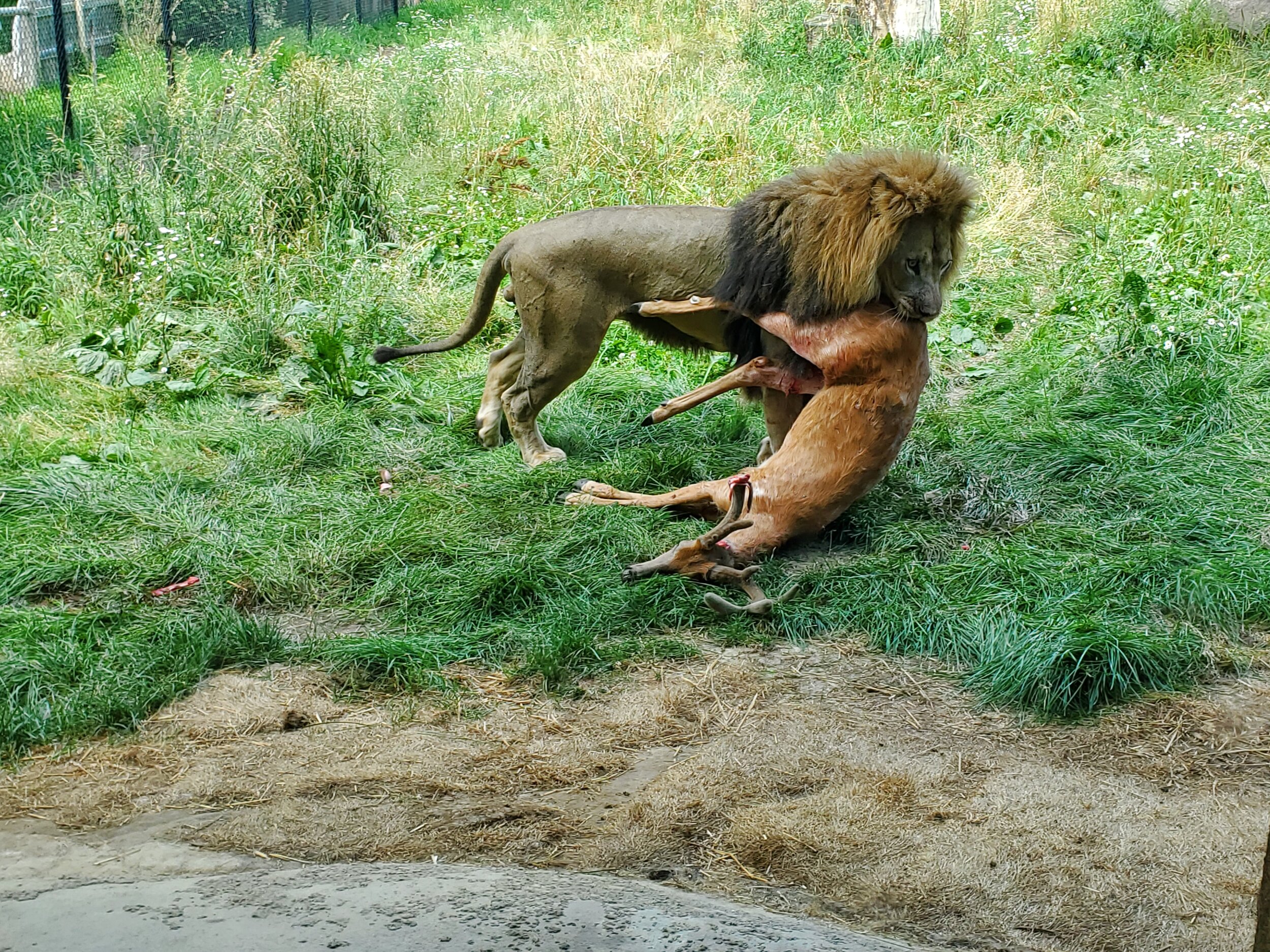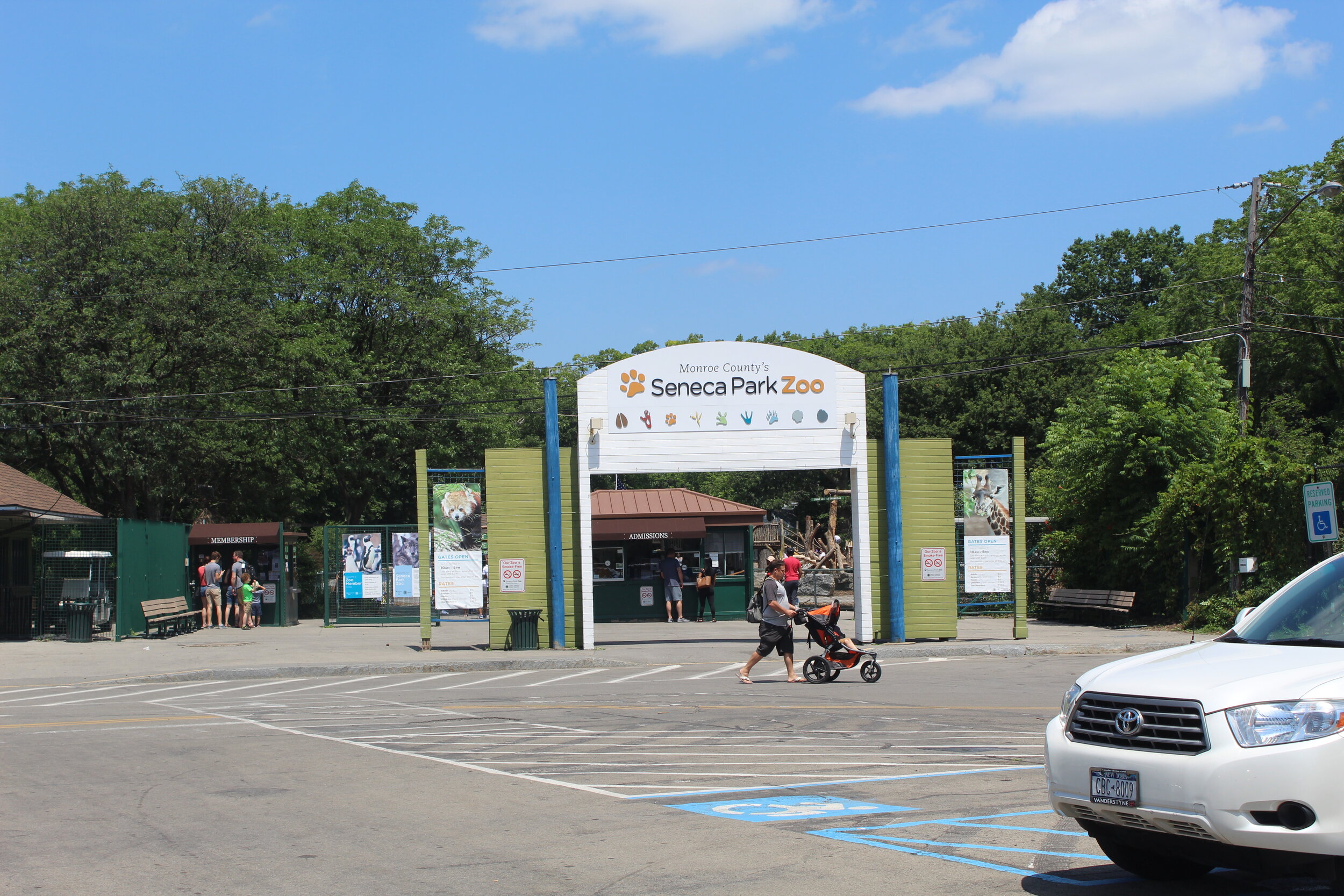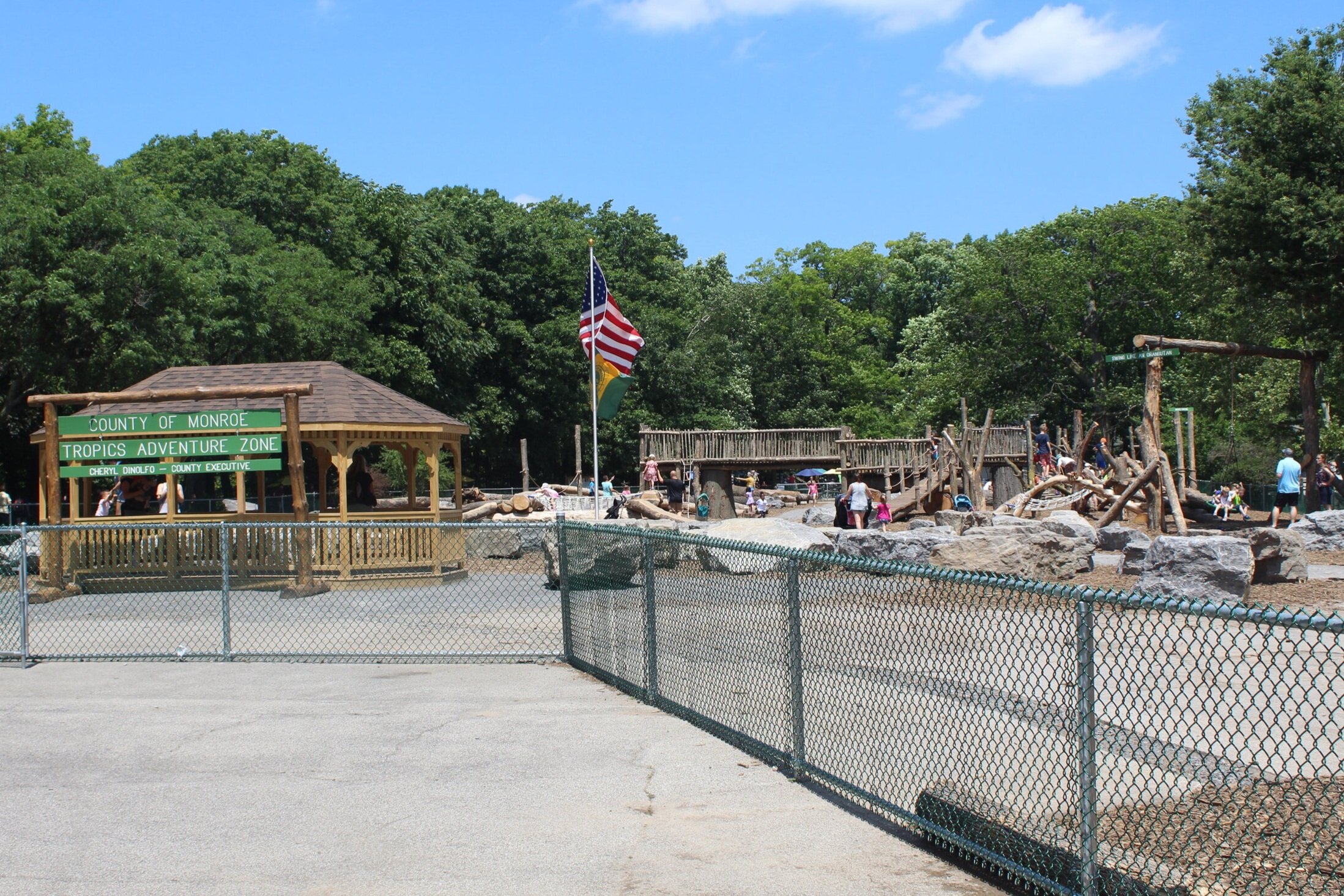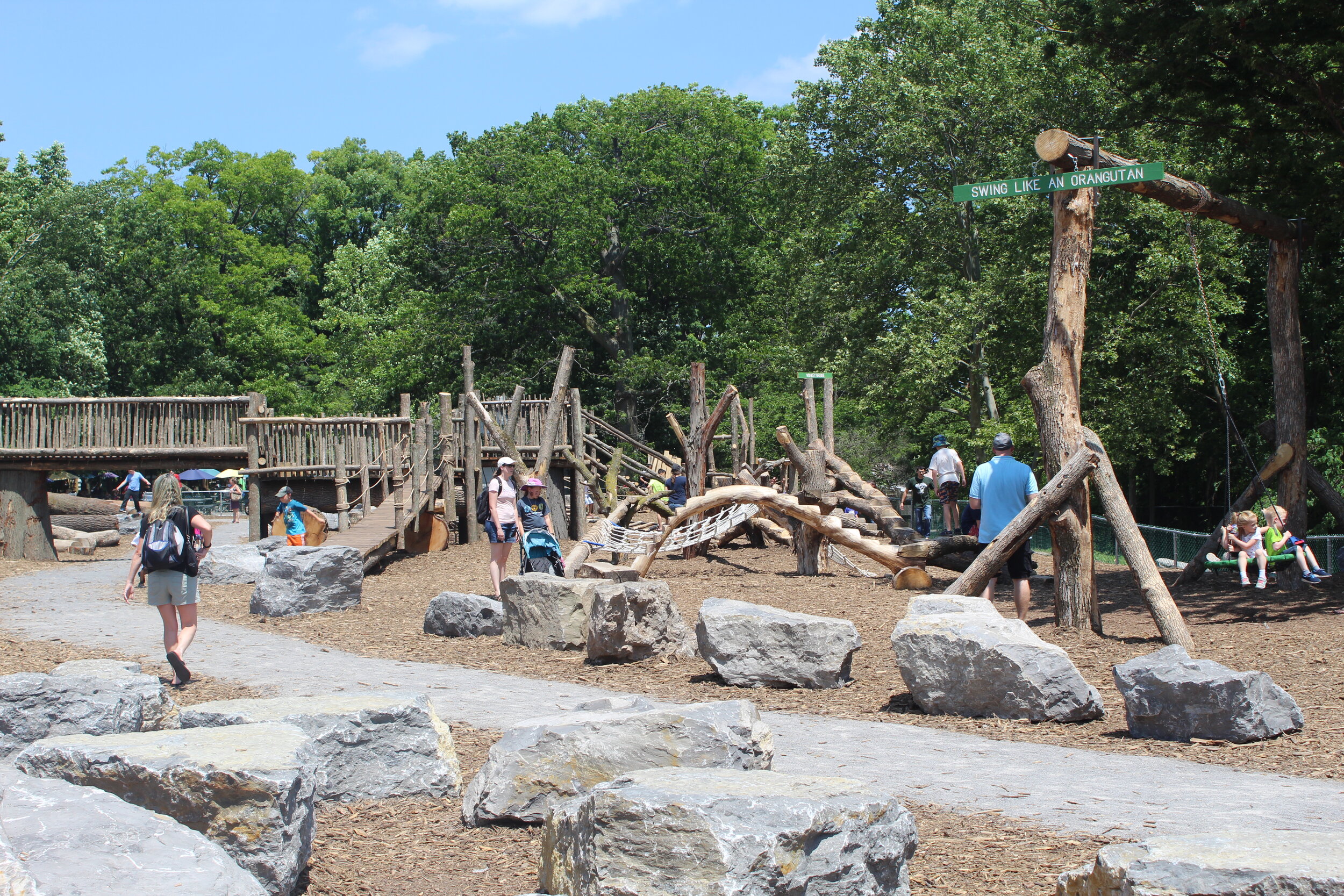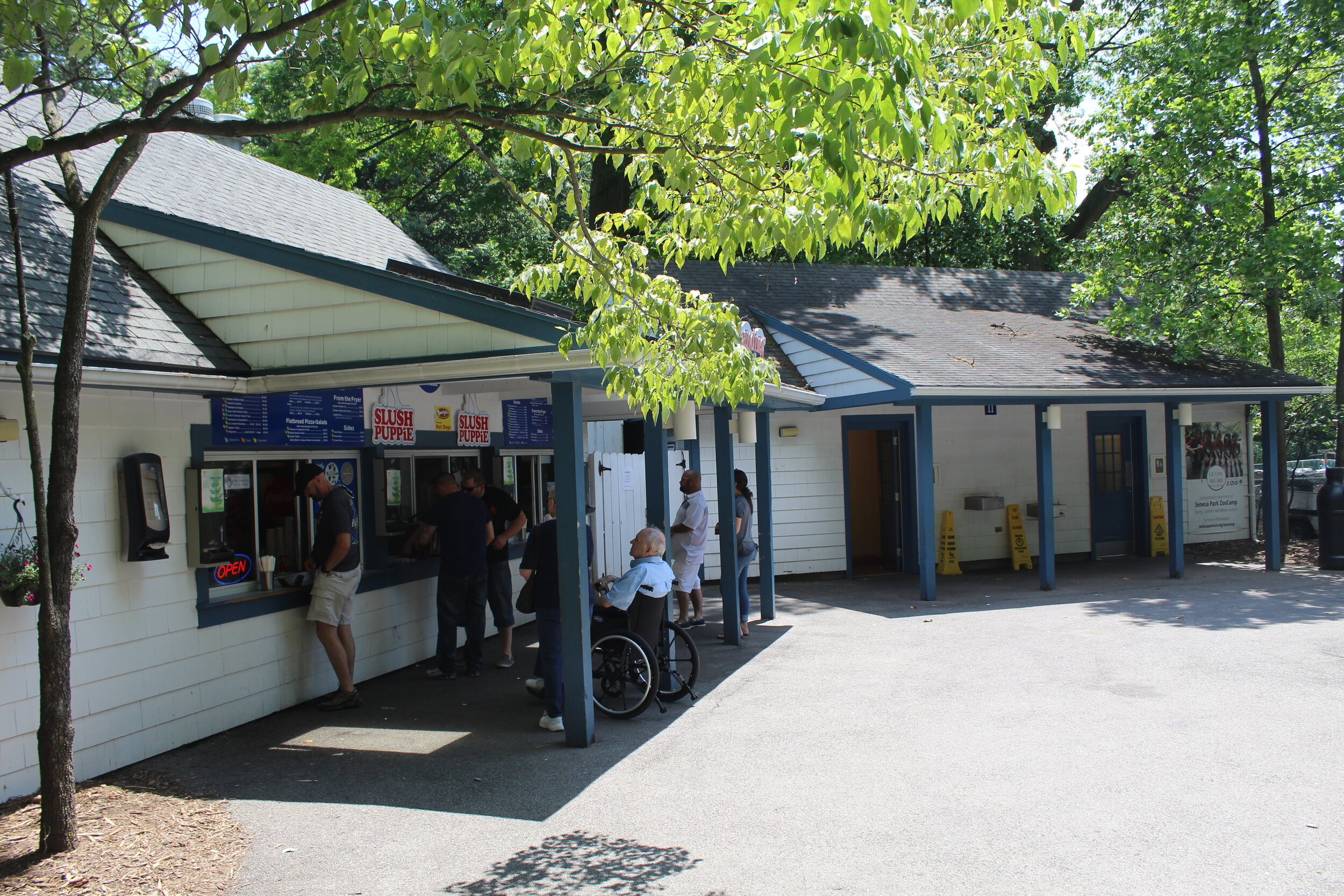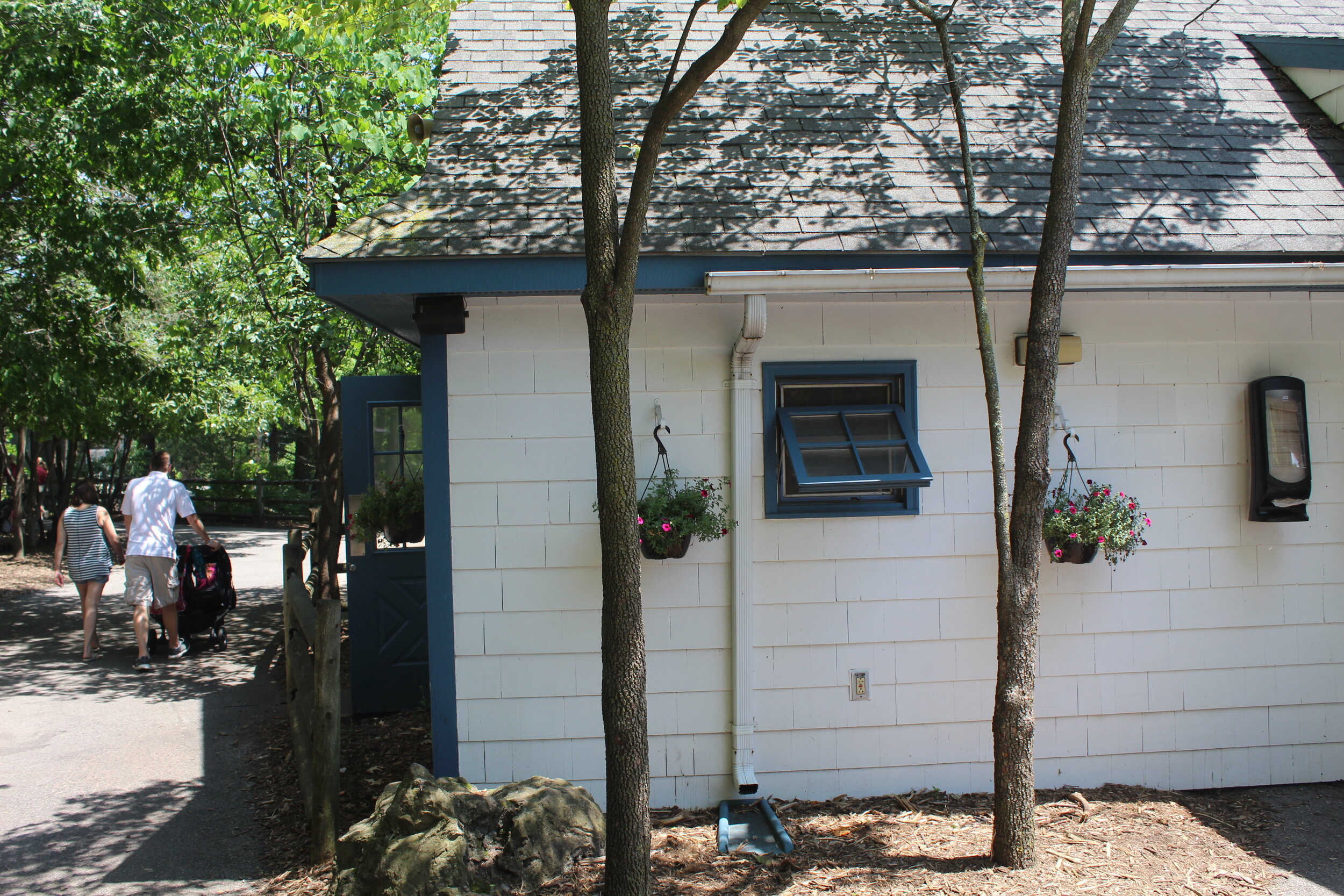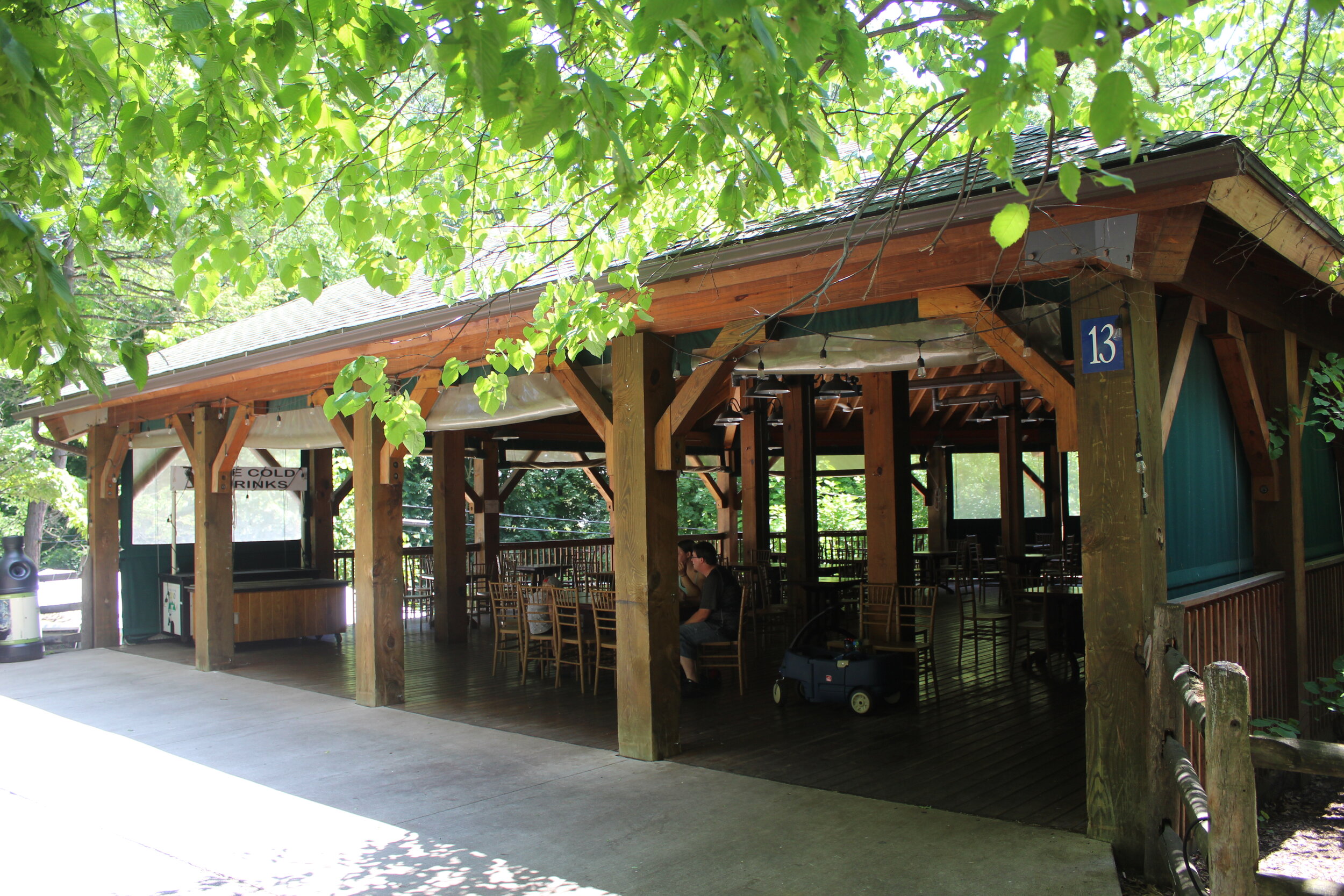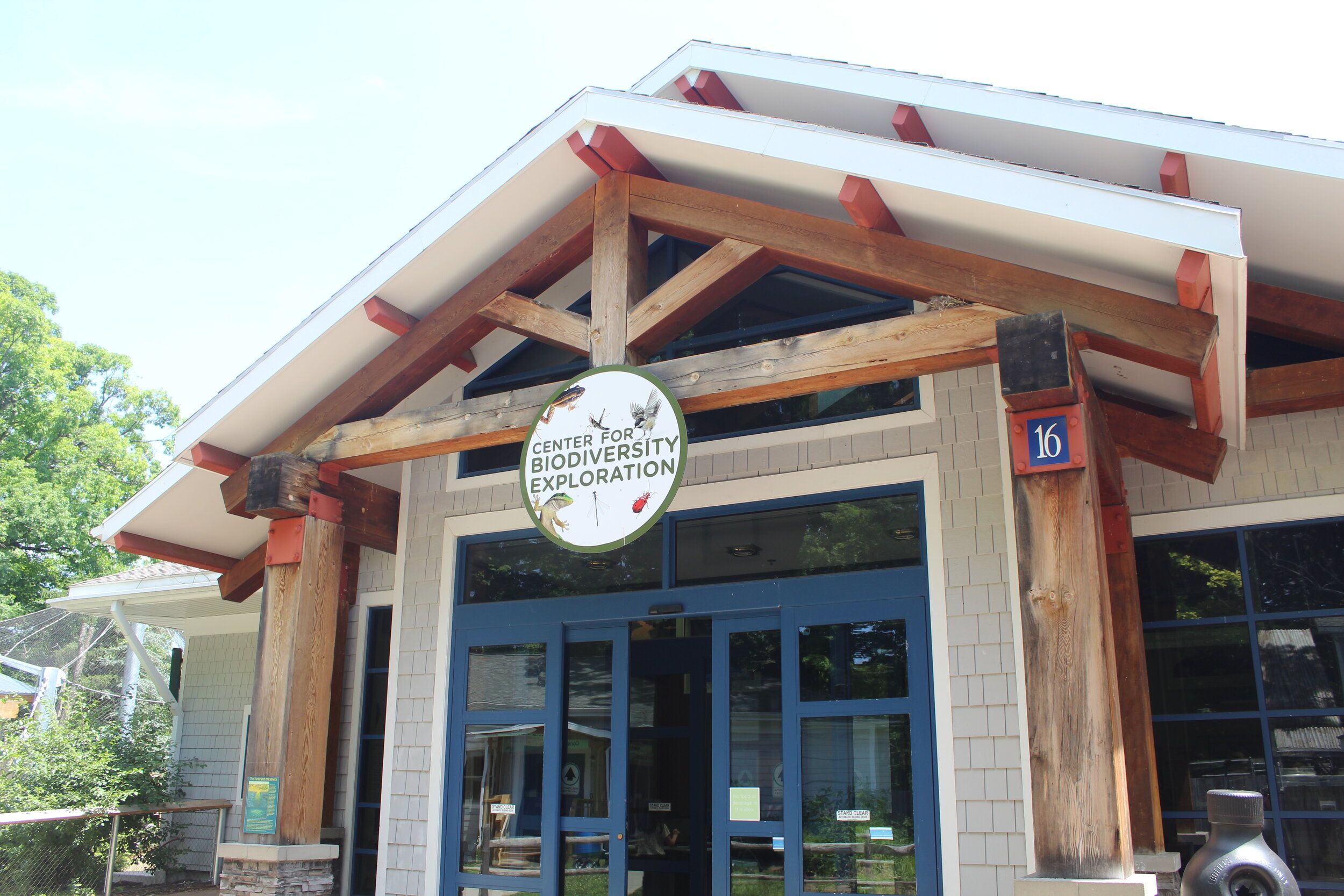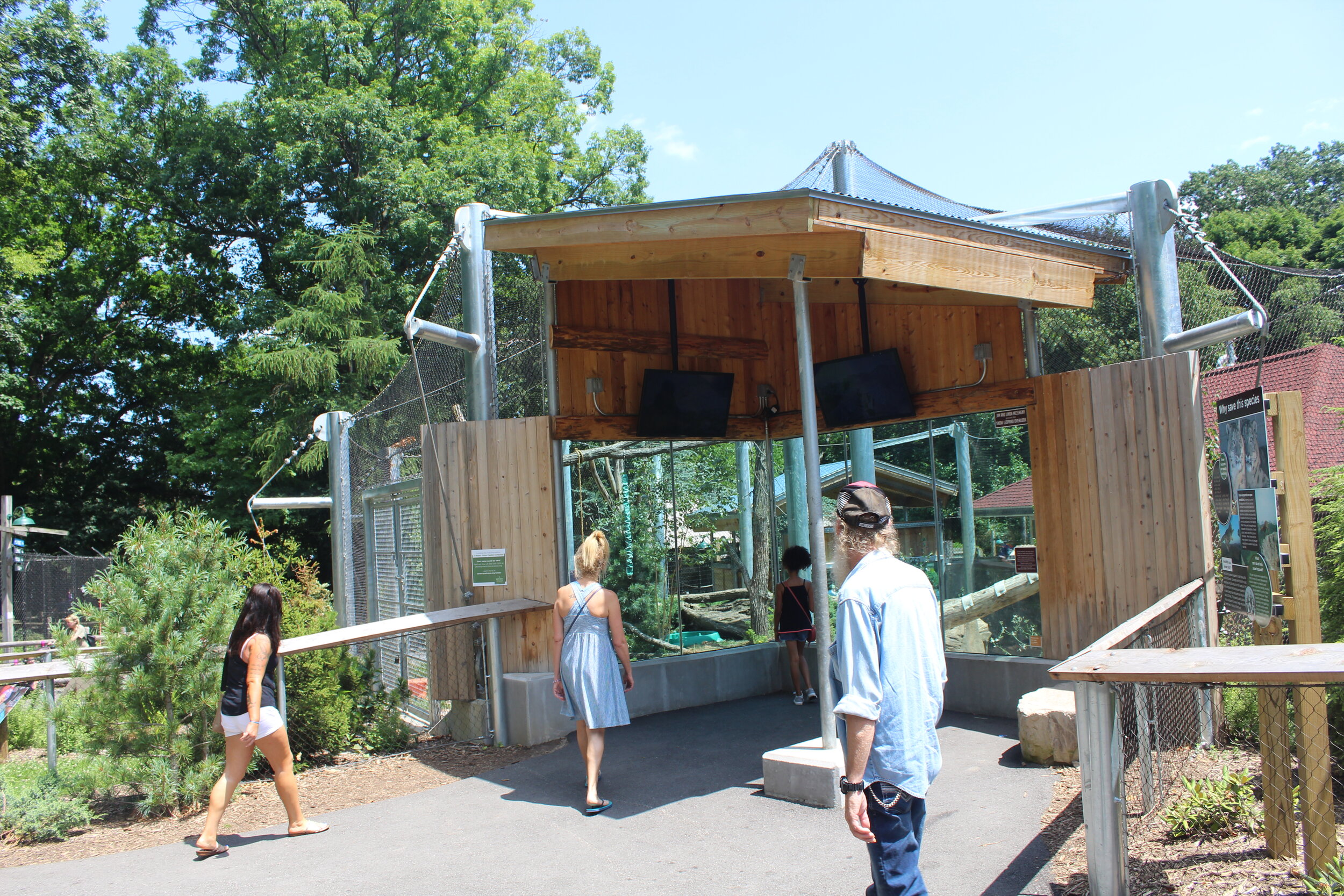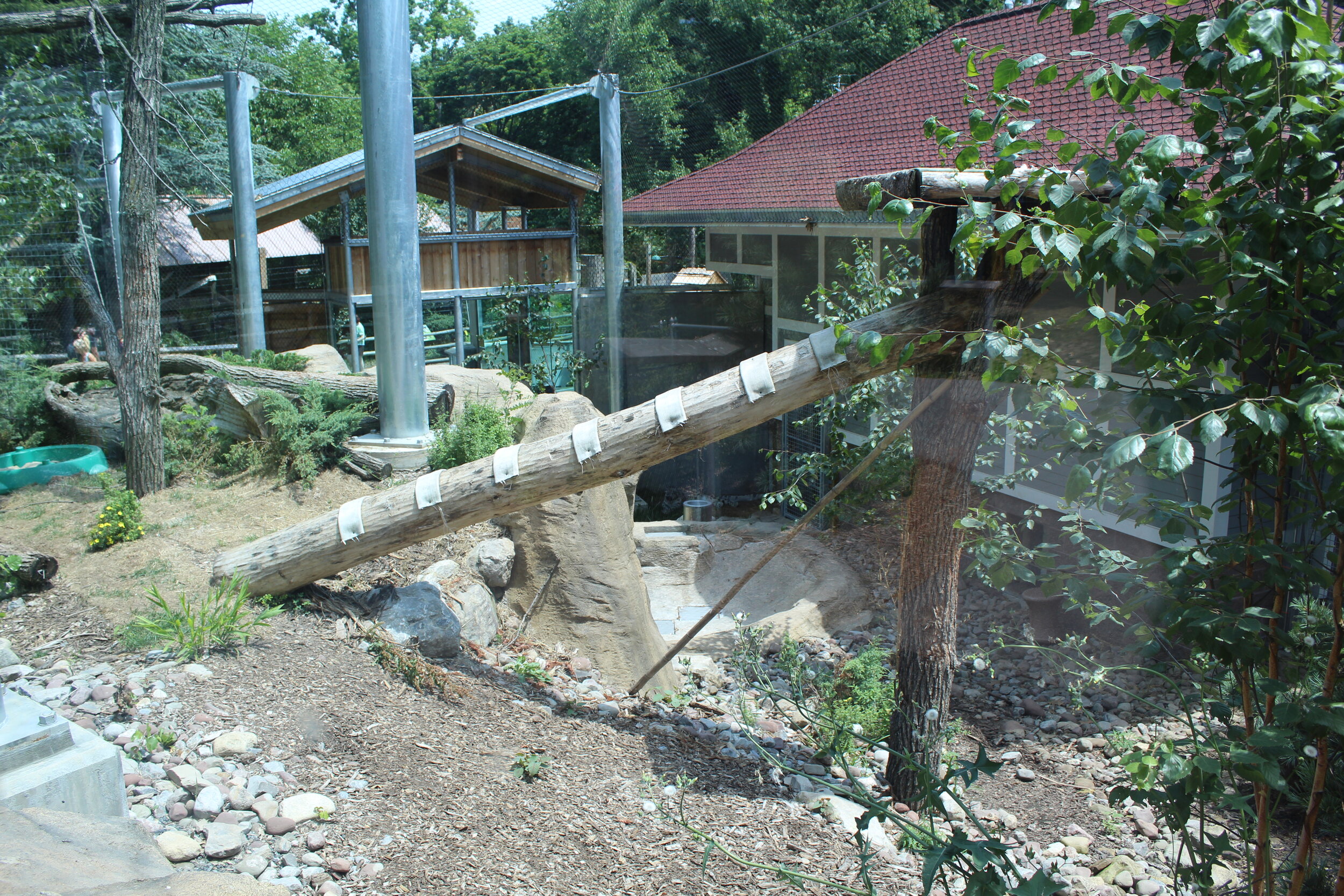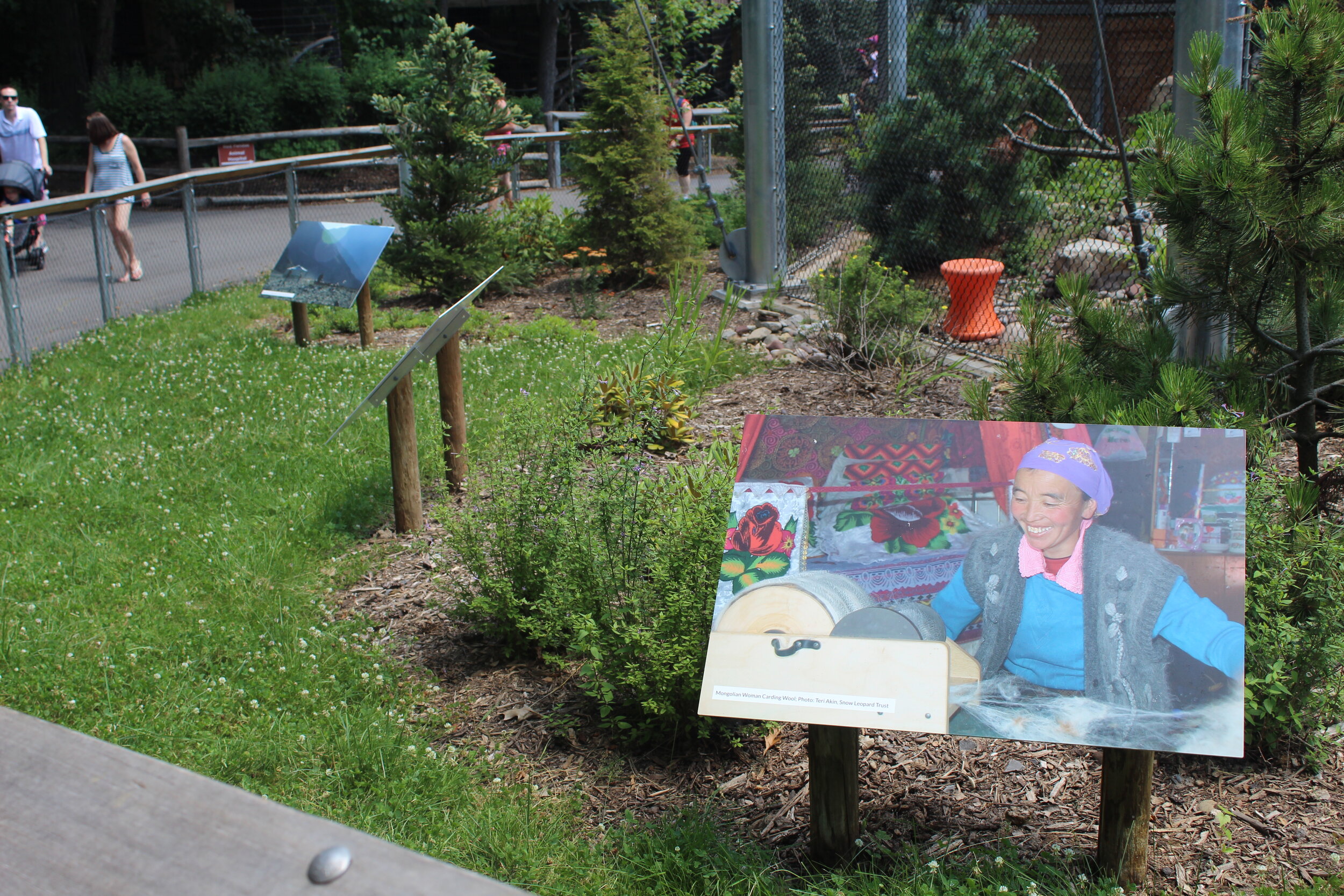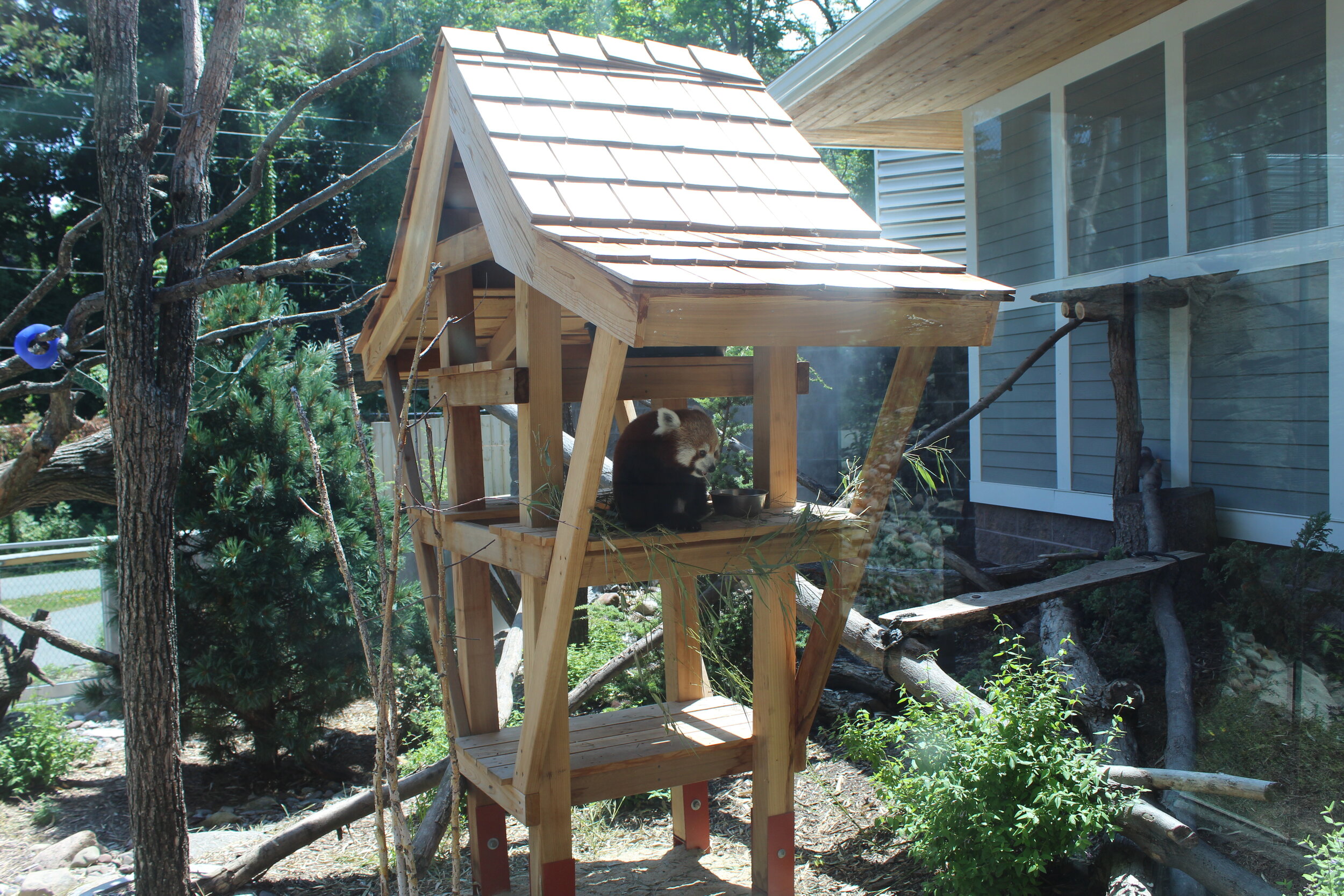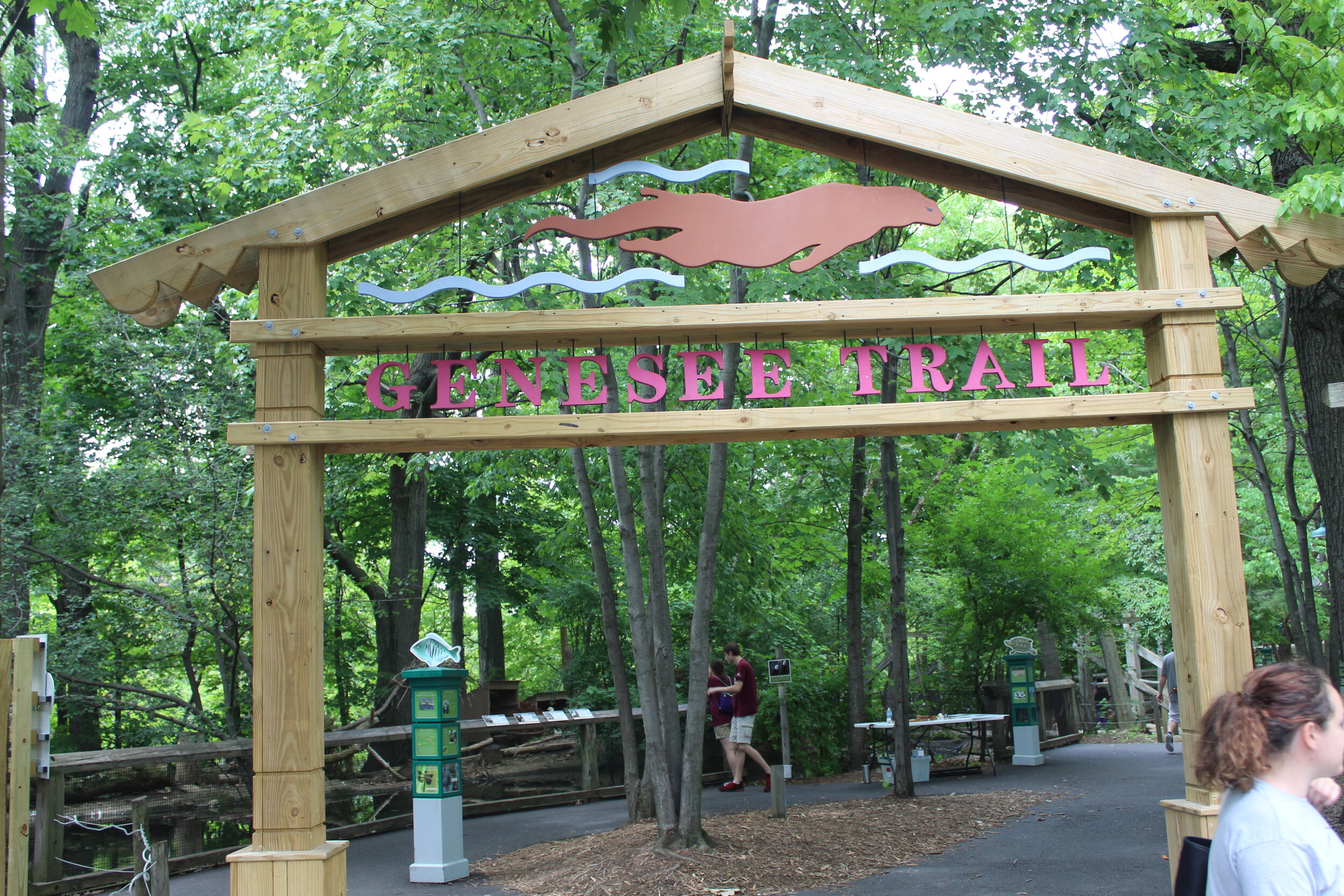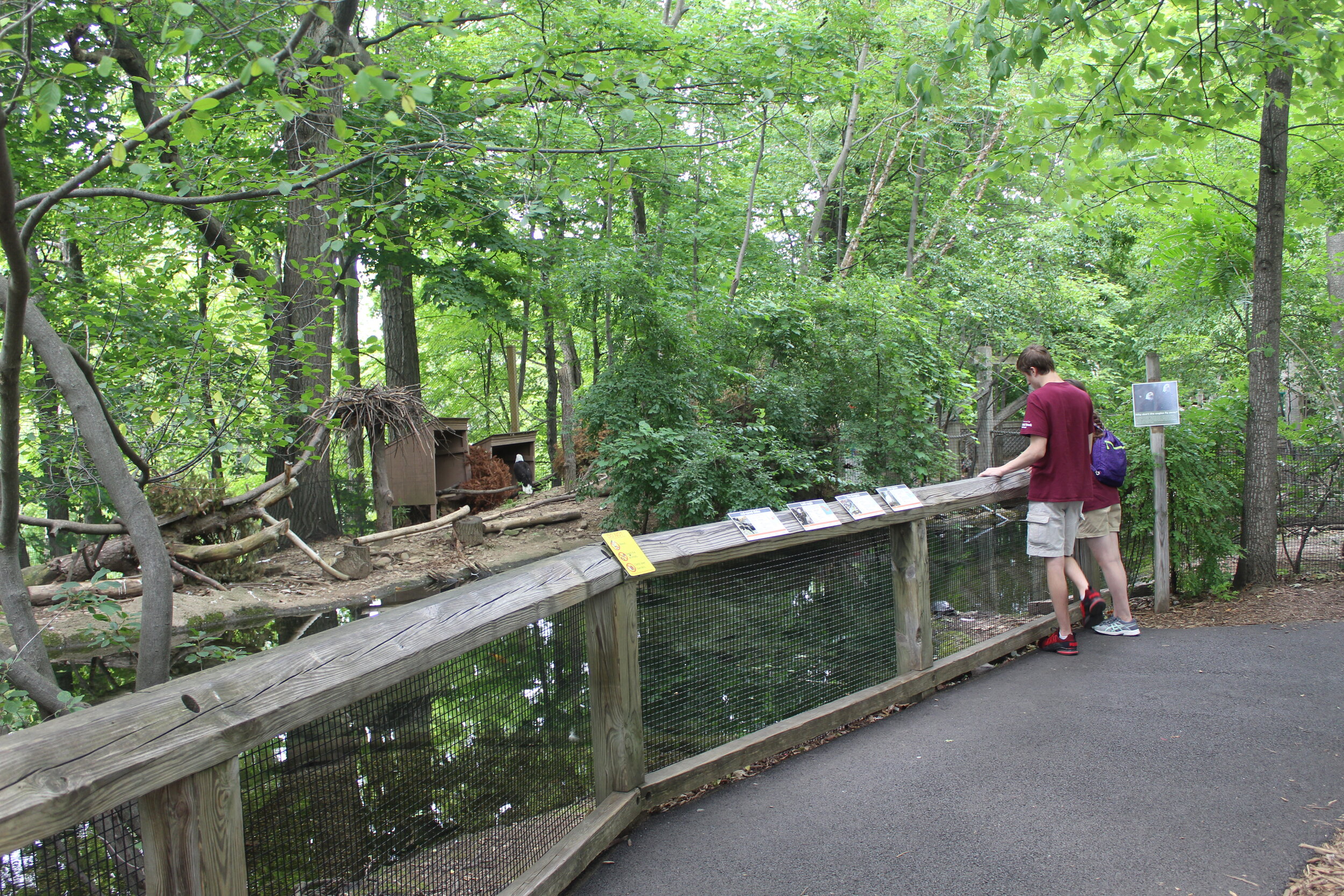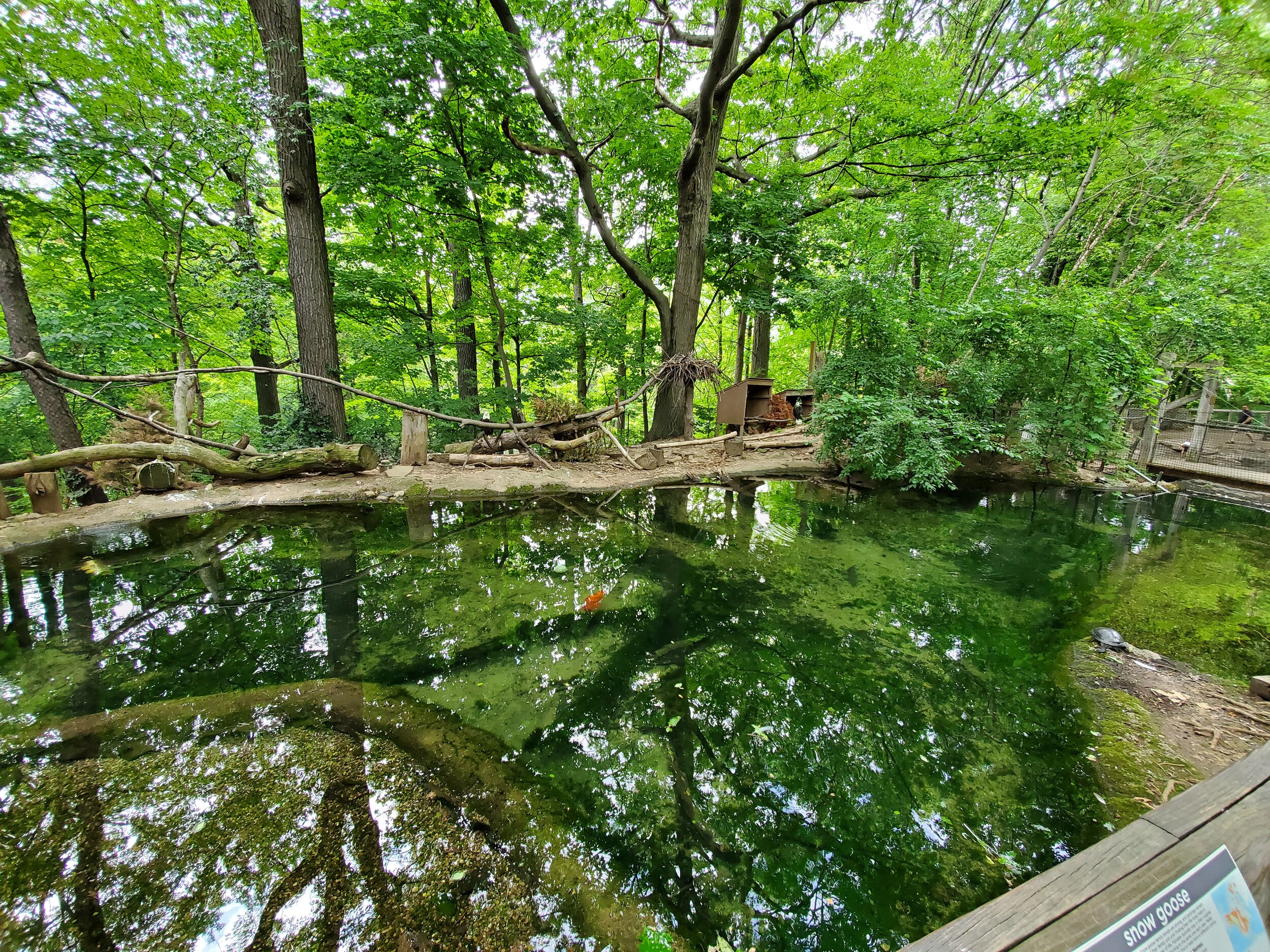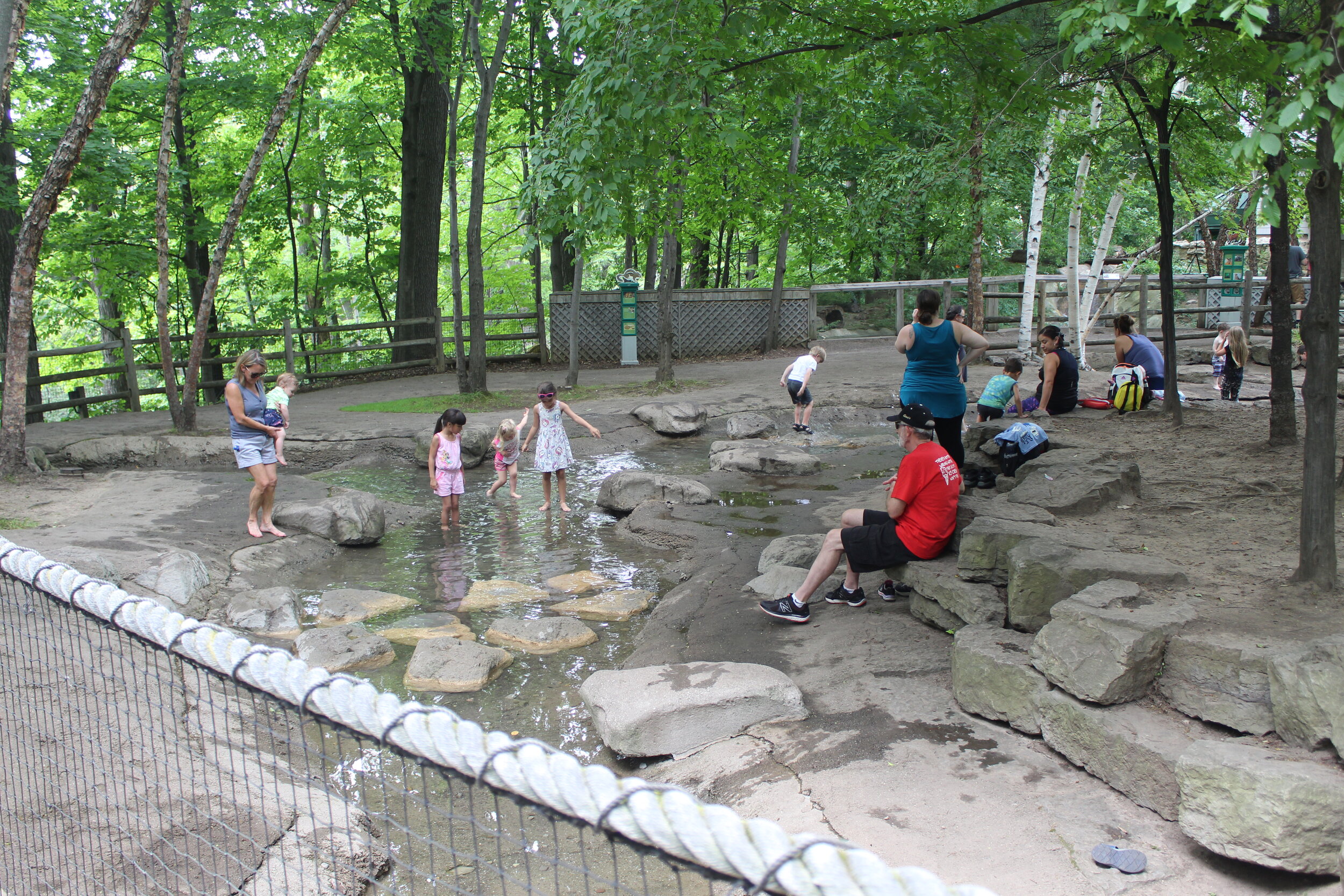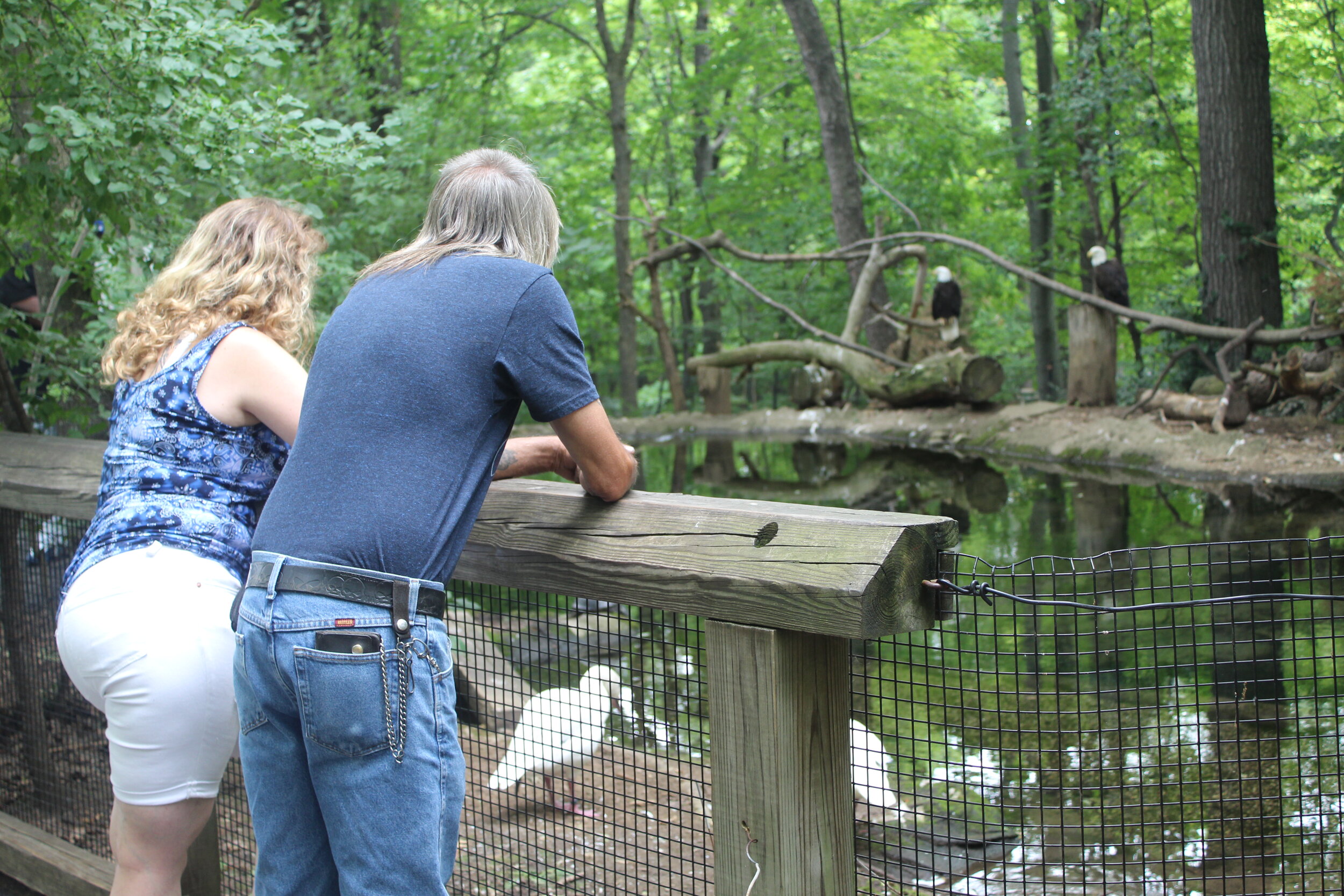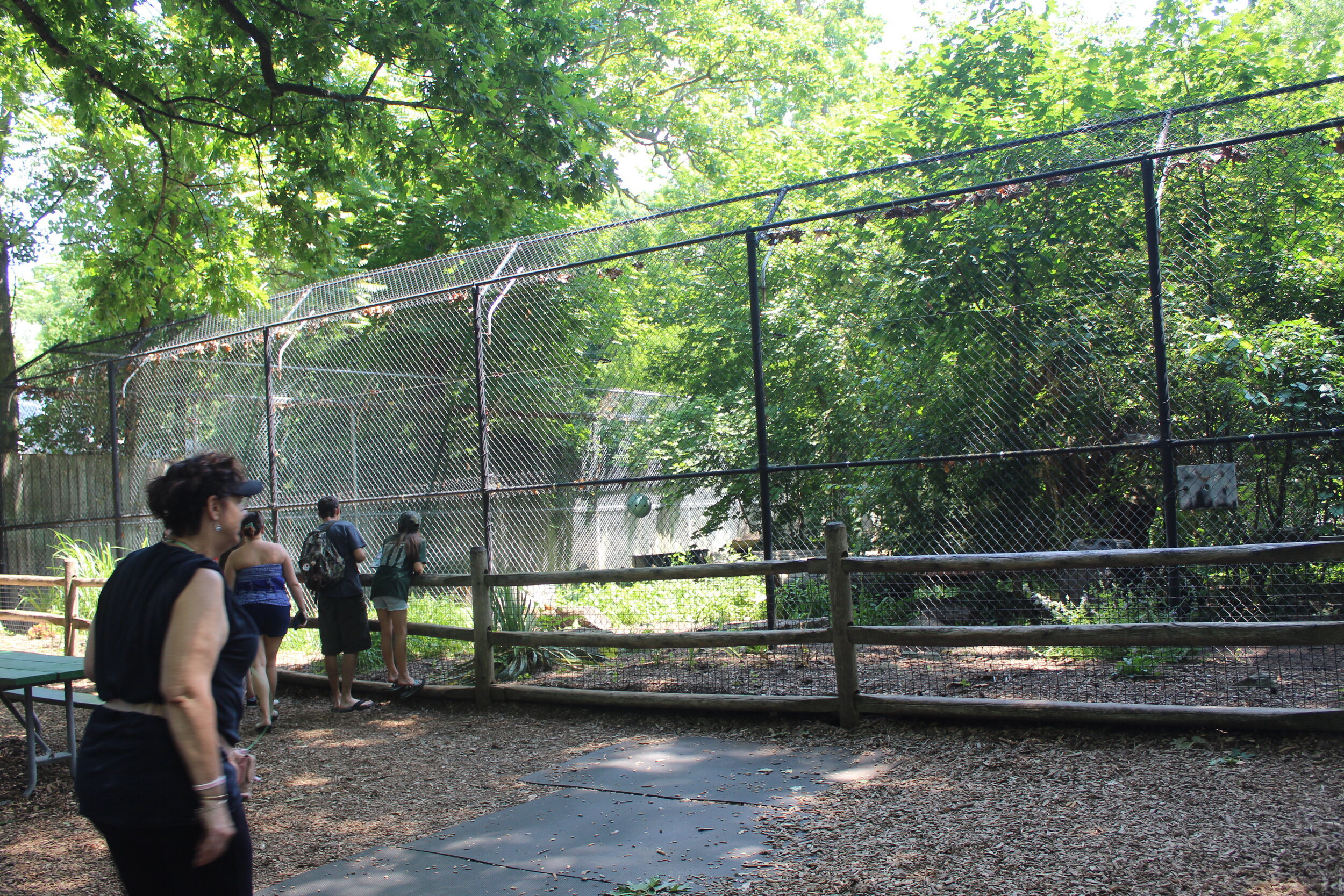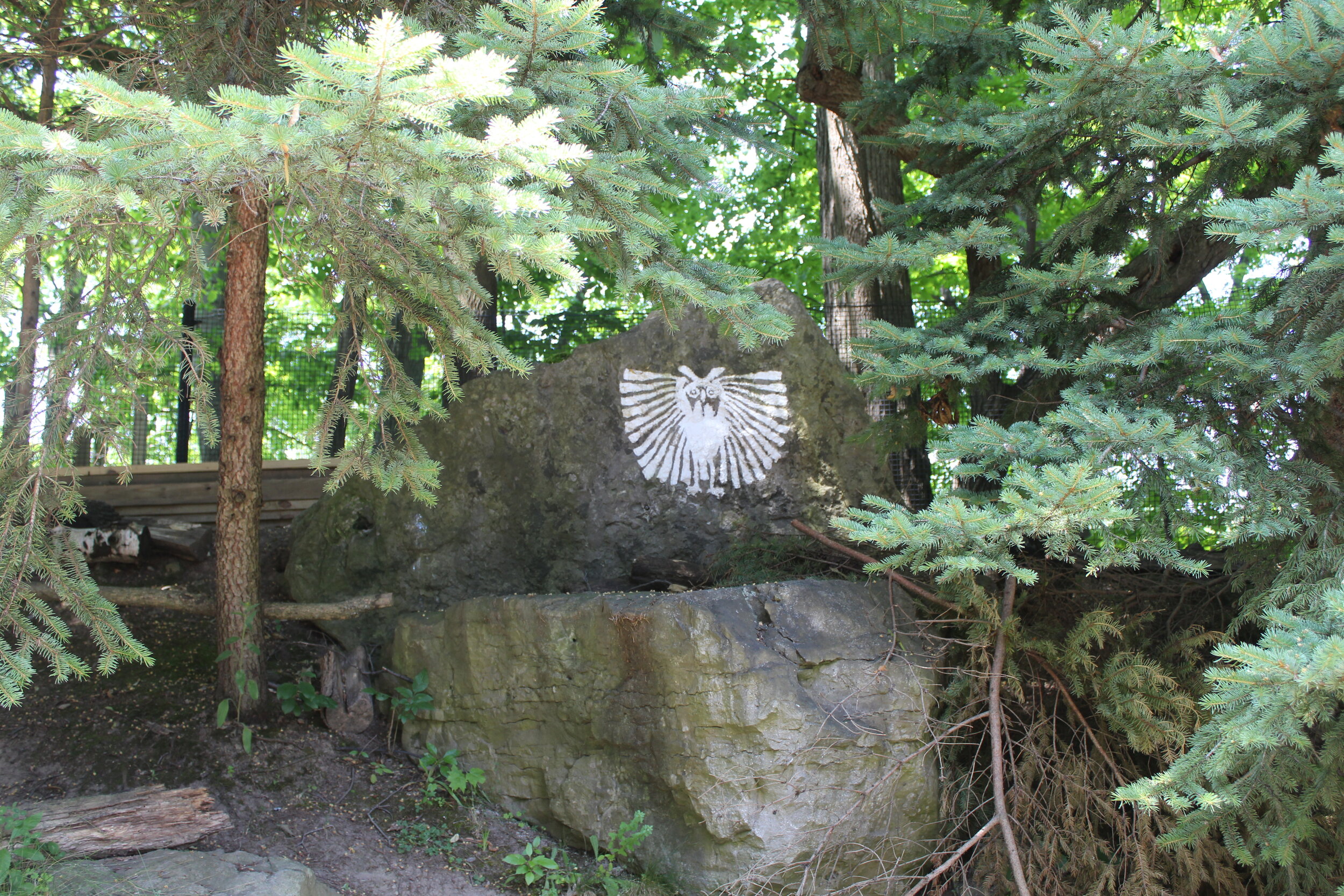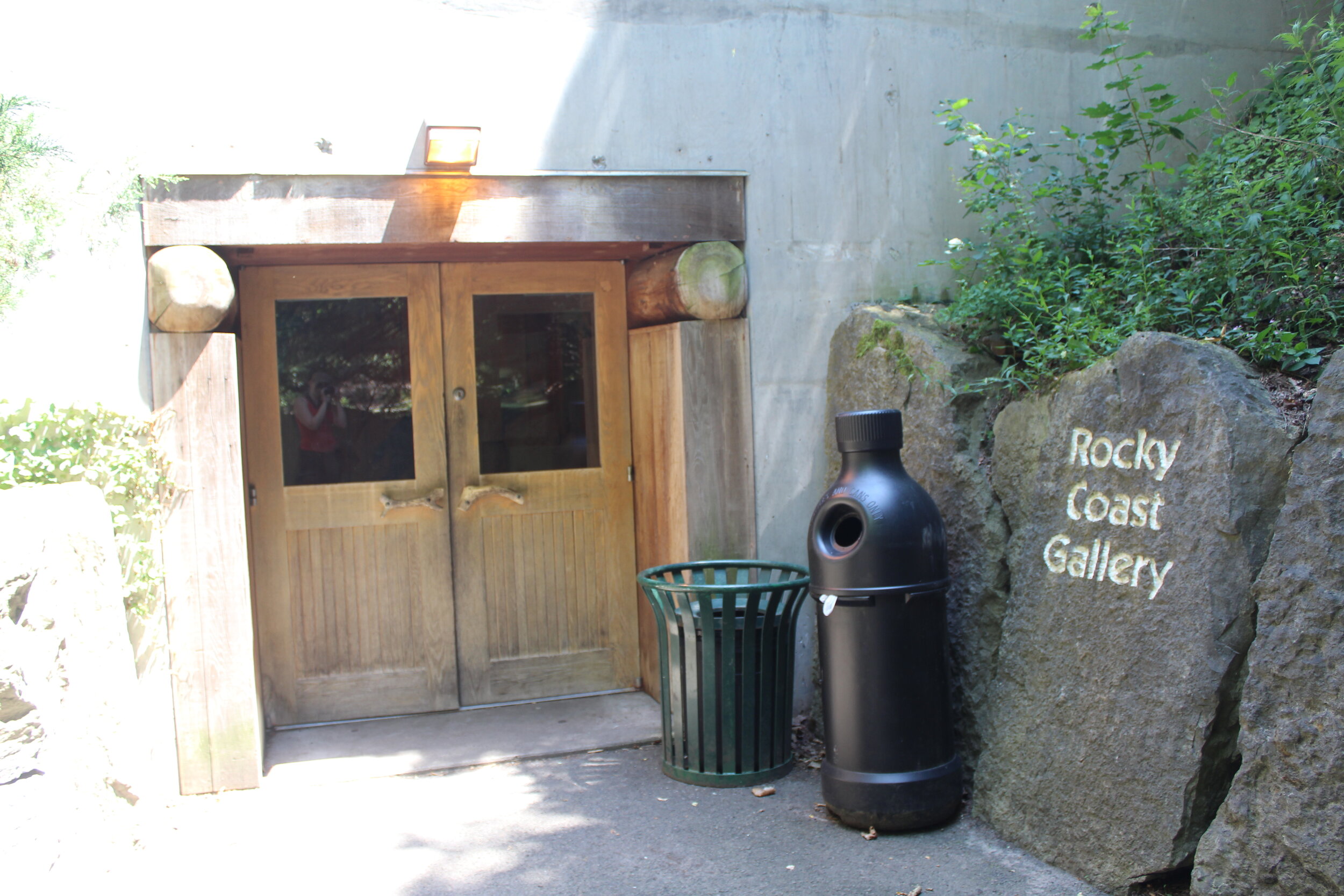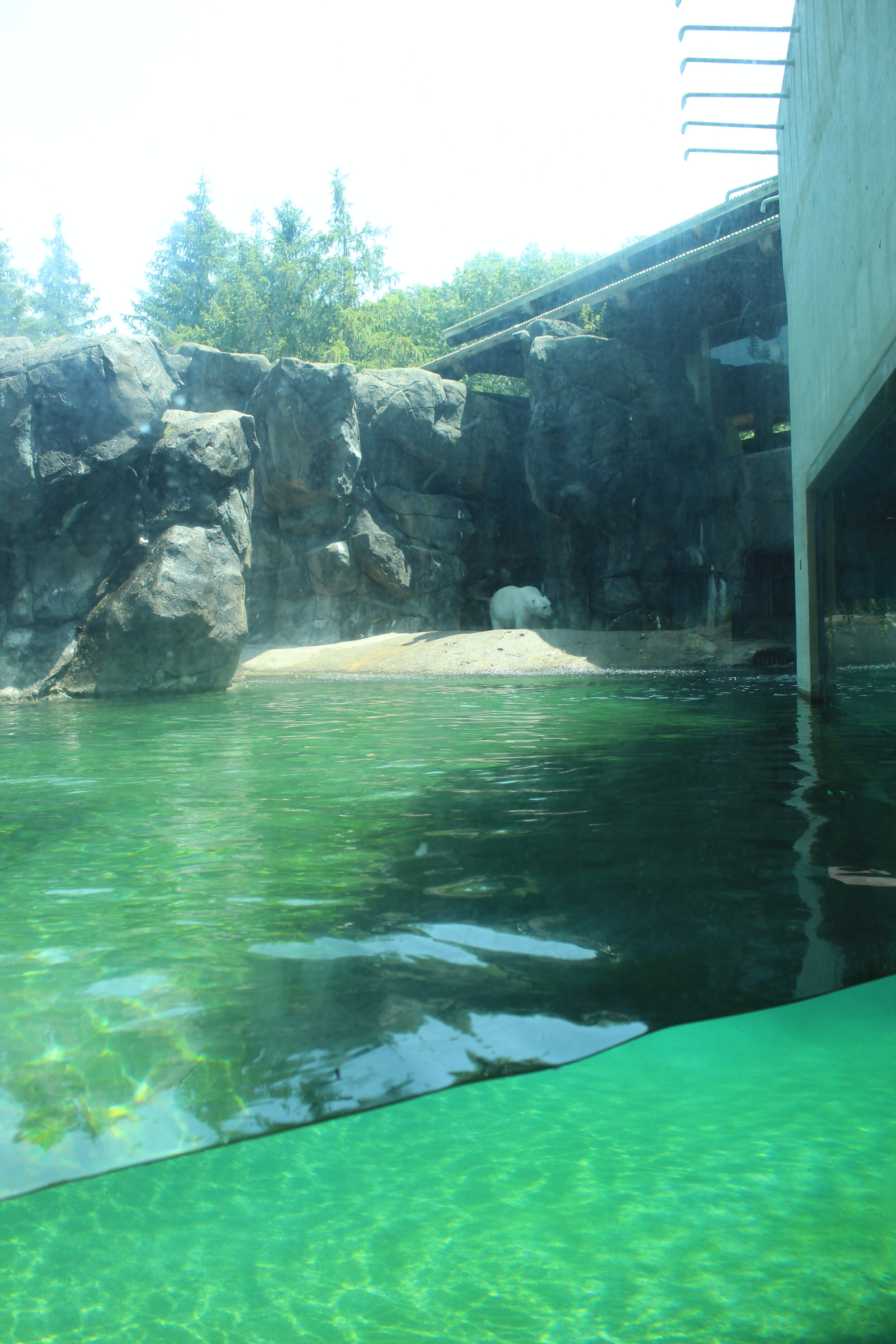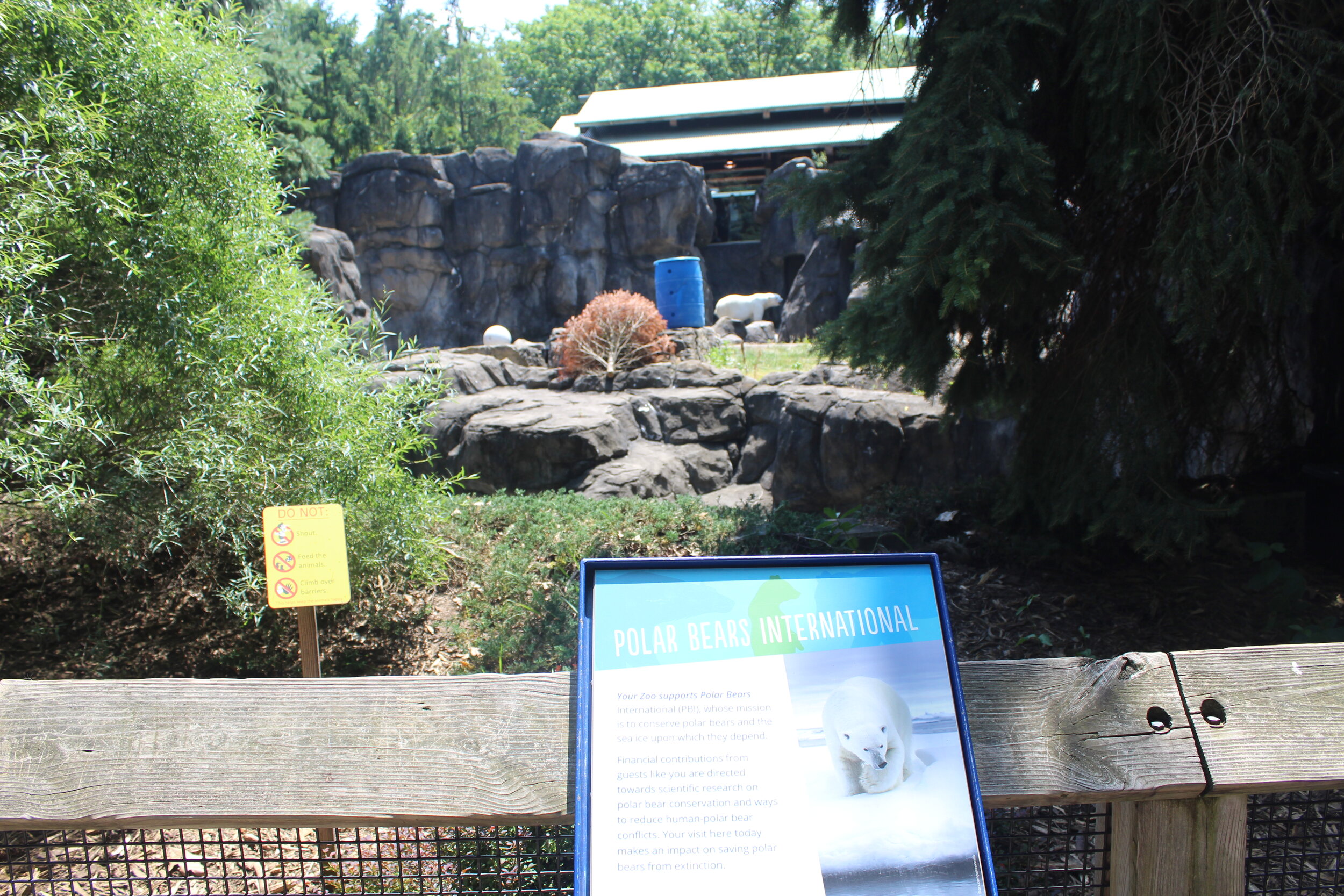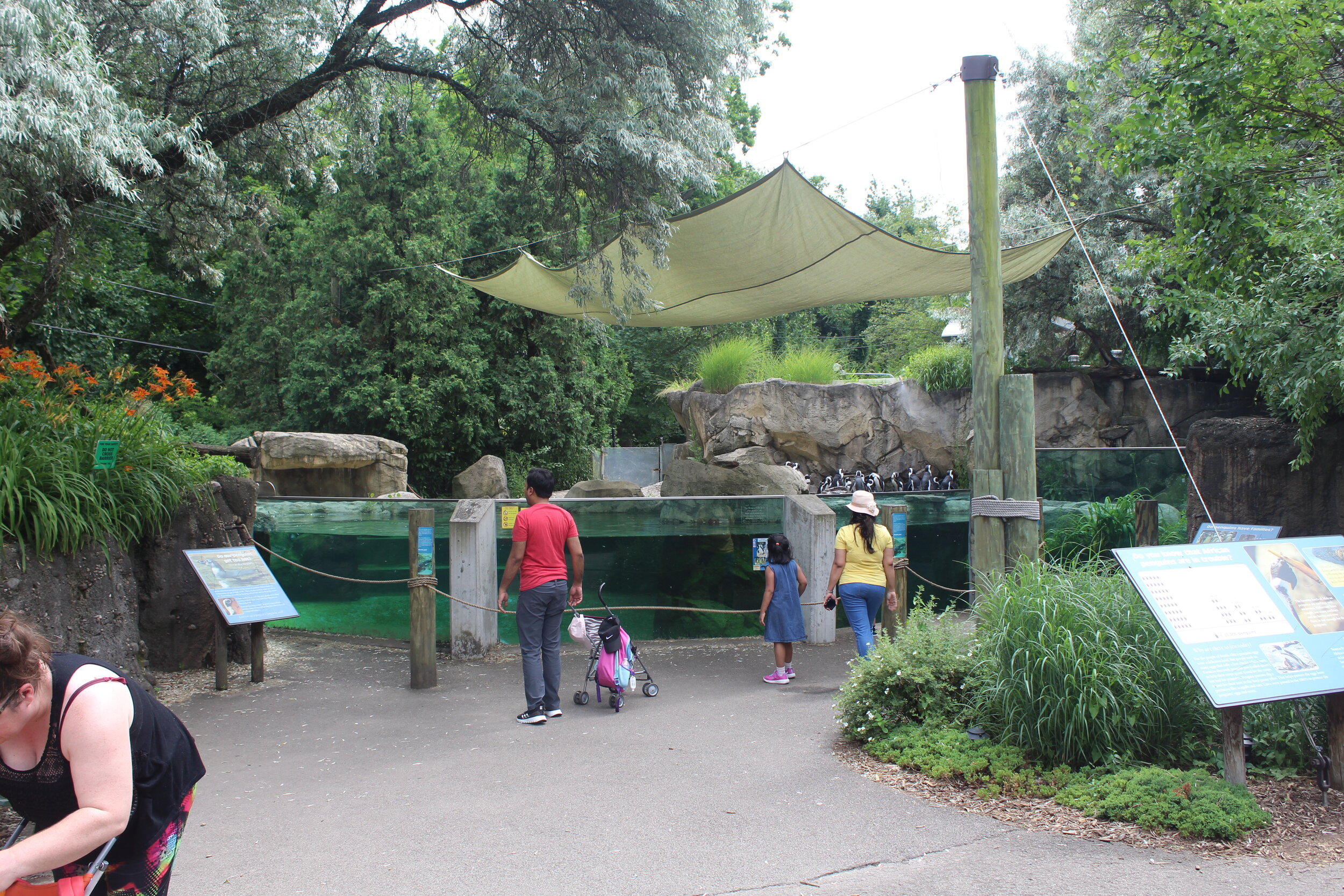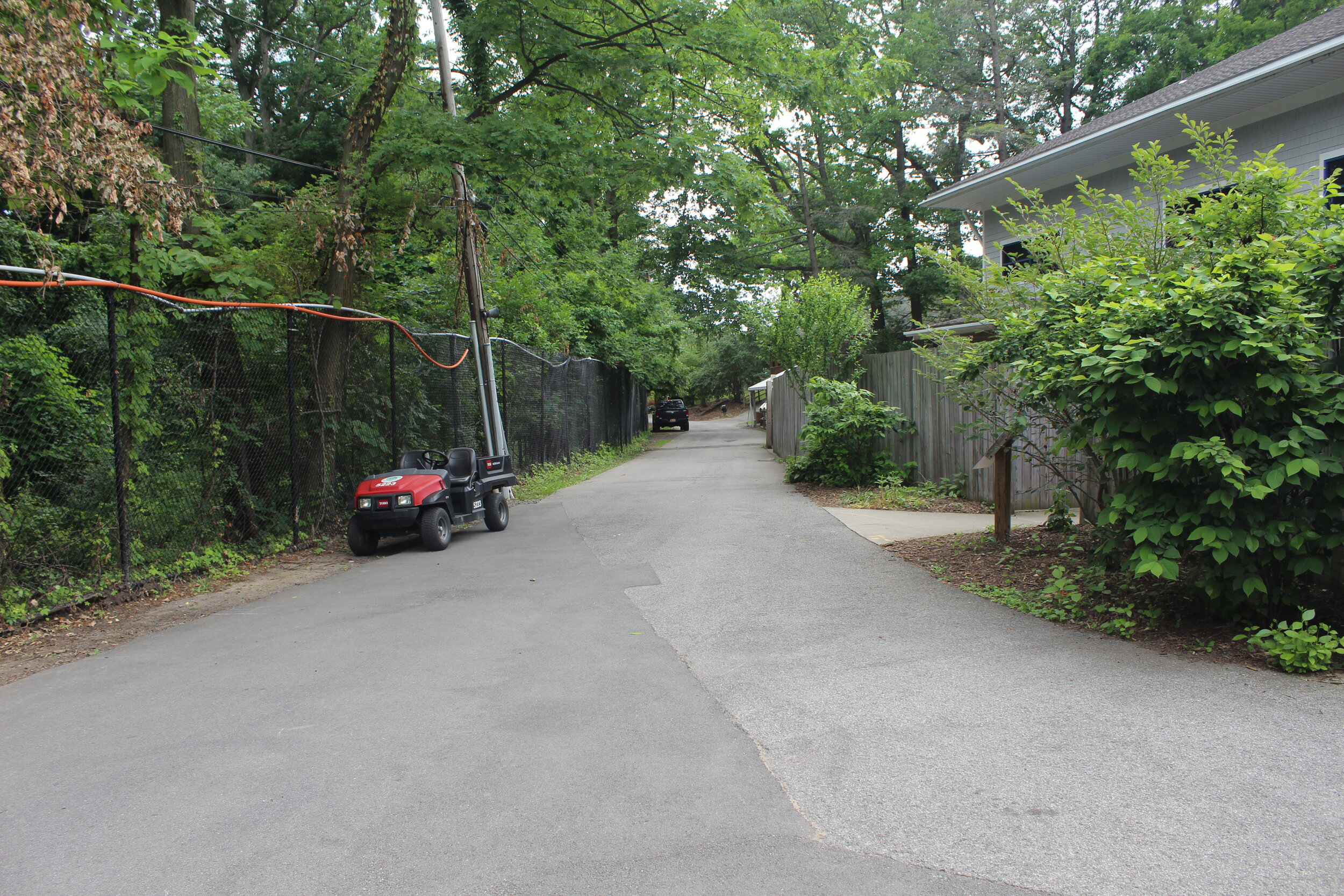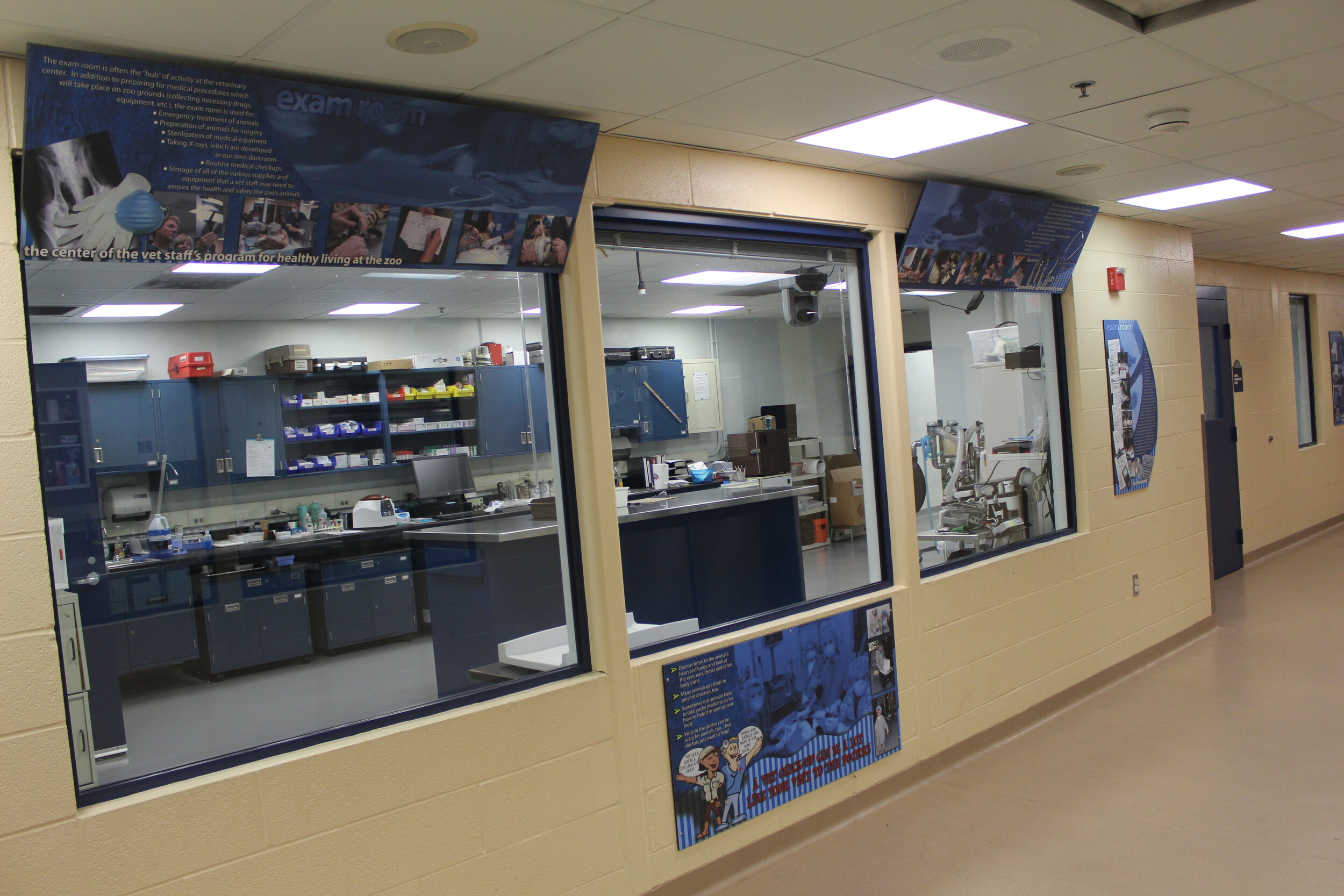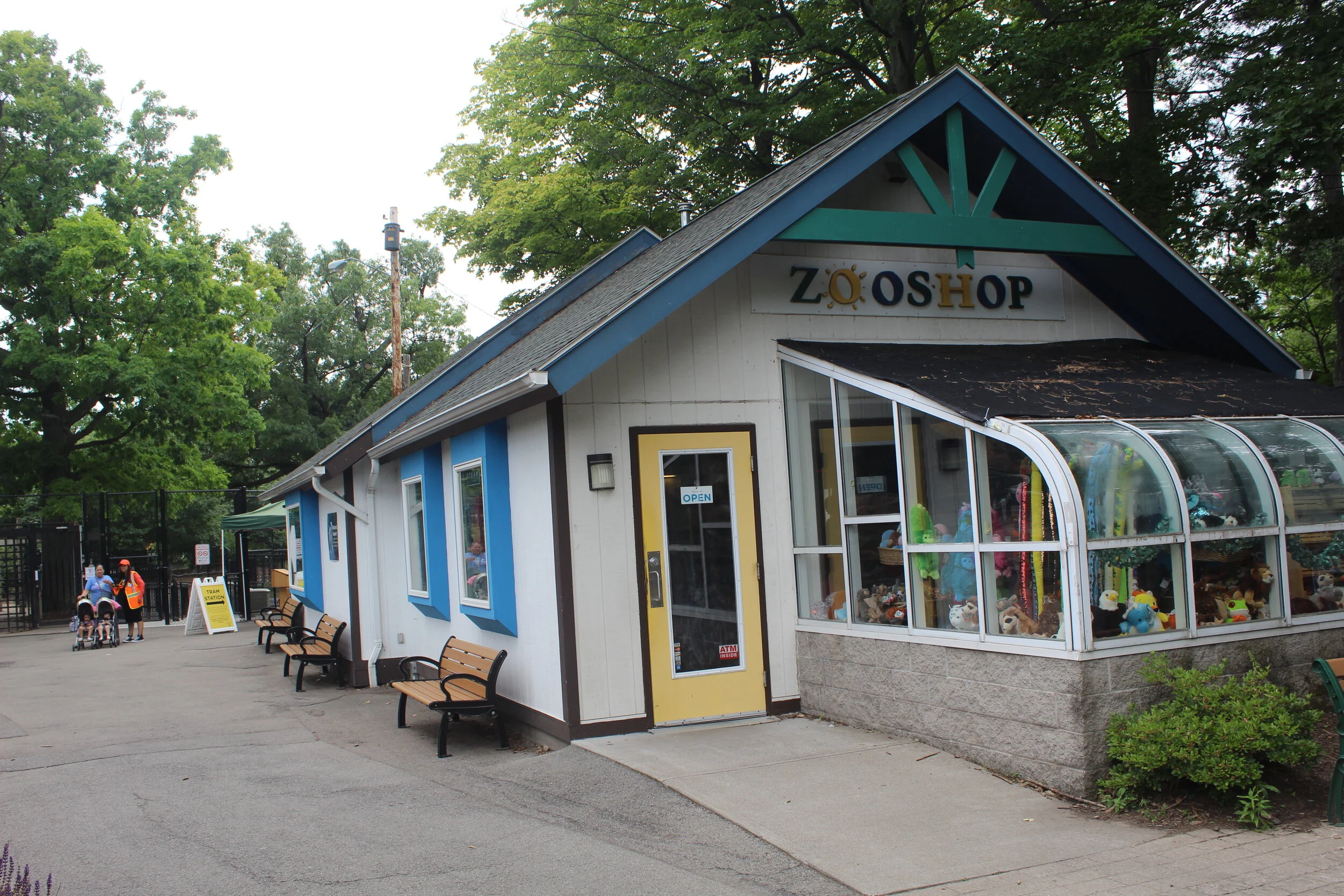Seneca Park Zoo: An East Coast Charmer
Seneca Park Zoo is a long linear site.
Parks-style wayfinding throughout
CASE STUDY: SENECA PARK ZOO
County-owned, AZA accredited Seneca Park Zoo is a twenty-acre gem set into Olmsted-designed Seneca Park in Rochester, New York. As one would imagine. But unlike many publicly owned small zoos, this one is unique for many reasons. The biggest, and most challenging, lies within the site itself—a long linear sliver of land following the edge of the park and not nearly wide enough for a loop path. This makes for an intrinsically different guest experience, whereby, if walking, you are required to double back and revisit the majority of the habitats (if you opt for the tram at an additional $2, you walk one direction and tram the other, through the adjacent park). While in most cases, I’d say this is poor design, but for this little zoo, it makes sense—and actually, it works well.
The zoo has a very quaint American East coast ‘upstate’ vibe toward the front of the zoo, mixed with decidedly ‘Parks Department chic’ directional signage throughout. The new exhibits located at the very back of the zoo—A Step Into Africa, merge modern, functional architecture (the giraffe and rhino holding buildings especially) with thematics well. Although the story and placemaking change three times that I counted (American East Coast-y, Pacific Northwest, Africa), some consistency was being implemented through new interpretive signage and visitor railings.
What makes this zoo different is for sure the site. Throughout, you feel entirely lost in the woods, and even in Africa--where it was obvious that in order to maximize the width of the zoo for animals, guest path was pushed almost directly against the perimeter fence of the zoo—the views into the adjacent park allowed for continued greenery and views into a pond complete with gorgeous white swans (not African, of course, but who’s counting?). Within the giraffe and zebra mixed yard, care was taken to preserve a stand of mature trees, protected from the giraffe’s tongues by chainlink wrapping, which did start a few conversations that I overheard. The zebras especially enjoyed that stand of trees while I was watching—rolling around in the shade while my fellow zoo-goers complained of the heat (on the 84 degree, zero humidity day!).
Circling back to circling back…The issue of doubling back on the path you’ve already walked and past the exhibits you’ve already watched worked well, because the zoo has made a conscientious effort to implement multiple enrichment, training, and feeding demonstrations throughout the day at just about every exhibit. This operational decision, of course, ensures the animal behavior is changing throughout the day—even if you miss every single stinkin’ demonstration, like I usually do (but not today!). And, unlike other larger zoos, or zoos that provide a full loop experience, doubling back gives you the opportunity to find those critters who may have been hiding earlier.
On my visit, I managed to catch a keeper chat with the lions, where something truly exciting happened: whole carcass feeding! I’ve actually never had the chance to witness this at ANY sized zoo, so I was very interested in seeing the reaction from the guests. The zoo set out a single sandwich board sign with a tame warning of what guests were about to see, but the sign was located past where many visitors would’ve already had a look—and, you guessed it, most visitors blew right by it anyway. So what did I see? People were incredibly engaged. The cats were somewhat active, keeping an eye for rogue contenders who might steal their win, moving the deer carcass around ten feet from one spot to another, and chewing on it. Mostly chewing on the antlers and butt. It’s always the butt with cats, amiright? I overheard a few ‘eewwws,’ but not as many as I thought, and surprisingly, the kids were WAY more okay with it than I would’ve guessed--and, as it turns out, as many parents would’ve guessed.
One particular mom kept trying to get her six to nine year old daughter (again, I don’t have kids so I’m not good at aging them!), who was decked out in girly-girl pink and ruffles and hair ribbons galore, to move on with no luck. This kid was absolutely engaged. Mom kept laughing nervously, like, why does she like this? Is there something wrong with my girl? Why isn’t she freaked out by the lifeless black eyes staring blankly from the fly-covered, bloody, mangled body of a cute white-tailed deer?? It’s okay, Mom. She’s just getting prepped to be a veterinarian one day.
So what would I change about Seneca Park Zoo? Really, just one thing. The entry. Pulling up after passing all of the overflow parking lots, wondering if I needed to park that far out, built up a pretty big sense of arrival and expectation. If there’s three overflow lots, that means they must get a lot of visitors, which means this zoo is probably pretty awesome, right? I was expecting a grand entry welcoming me into the Greatest Forest Adventure I’ve ever seen. Instead, a very basic sign above a squat ticket building was all I got. Once inside the gate, the Largest Adventure Playground I’ve ever seen greeted me. Admittedly, the natural play elements are striking, and it really is a beautiful and well-used play area. Unfortunately, it’s surrounded by chainlink fencing, which is never a good first impression, and in order to see any of the zoo, you have to walk all the way around this massive thing. After the play area, a snack stand and seating awaits, along with a decision point. To the left, Genessee Trail, which from a cursory look, appears to be more play set in the woods, and to the right, a formal playground set and a wider pathway leading to a conservation center. Like people tend to do, I chose the path to the right, which sent me down a trail towards the conservation center, which had some computers inside. Adjacent to the Center, was, FINALLY, my first animal—a new snow leopard enclosure. Adjacent to the snow leopard is red panda. Neither are native to New York, but the architecture of the exhibits was clearly that east cost vernacular. This actually didn’t bother me at all. It was nice. It brought focus to the animals, their wildly enriched and complex habitat, and the lovely graphic panels of beautiful Mongolian scenes.
I didn’t time my journey from the entry to seeing my first animal, but it certainly felt long. Like, long enough that I, for just a second, forgot I was at a zoo at all! There was so much play…I almost was tricked into thinking I was lost in a playground.
However, I did make a bad decision. I went right instead of left. Left was where there were animals about 5 minutes quicker. A lovely bald eagle habitat with water that visually connects to a stream for kids play which then connects to North American river otter. A favorite of mine as an entry species. But, even though in proximity there were animal habitats closer to the front door than I thought, the fact that I so easily missed them AND that they were actually quite buried in the zoo (past the massive play area) means the entry really is in need of a redo.
Other than the entry experience, Seneca Park Zoo is truly one of America’s great small zoos. I can imagine if the zoo is limited to the footprint within which they exist today, the future of the zoo will be limited to the success they have now. They are simply out of space, and very few of the exhibits truly need updating. Tigers, wolves, hyenas, and raccoons—all located together in a grouping of habitats—could definitely use an update, but beyond that, I don’t see a lot of room for major new projects that will keep drawing new guests or repeat guests. That may be the biggest challenge in years to come for a zoo located within a growing metropolitan region. For now, let’s watch to see where their master plan takes them, and hopefully, next time, I’ll be welcomed with an entry filled with east coast charm.



